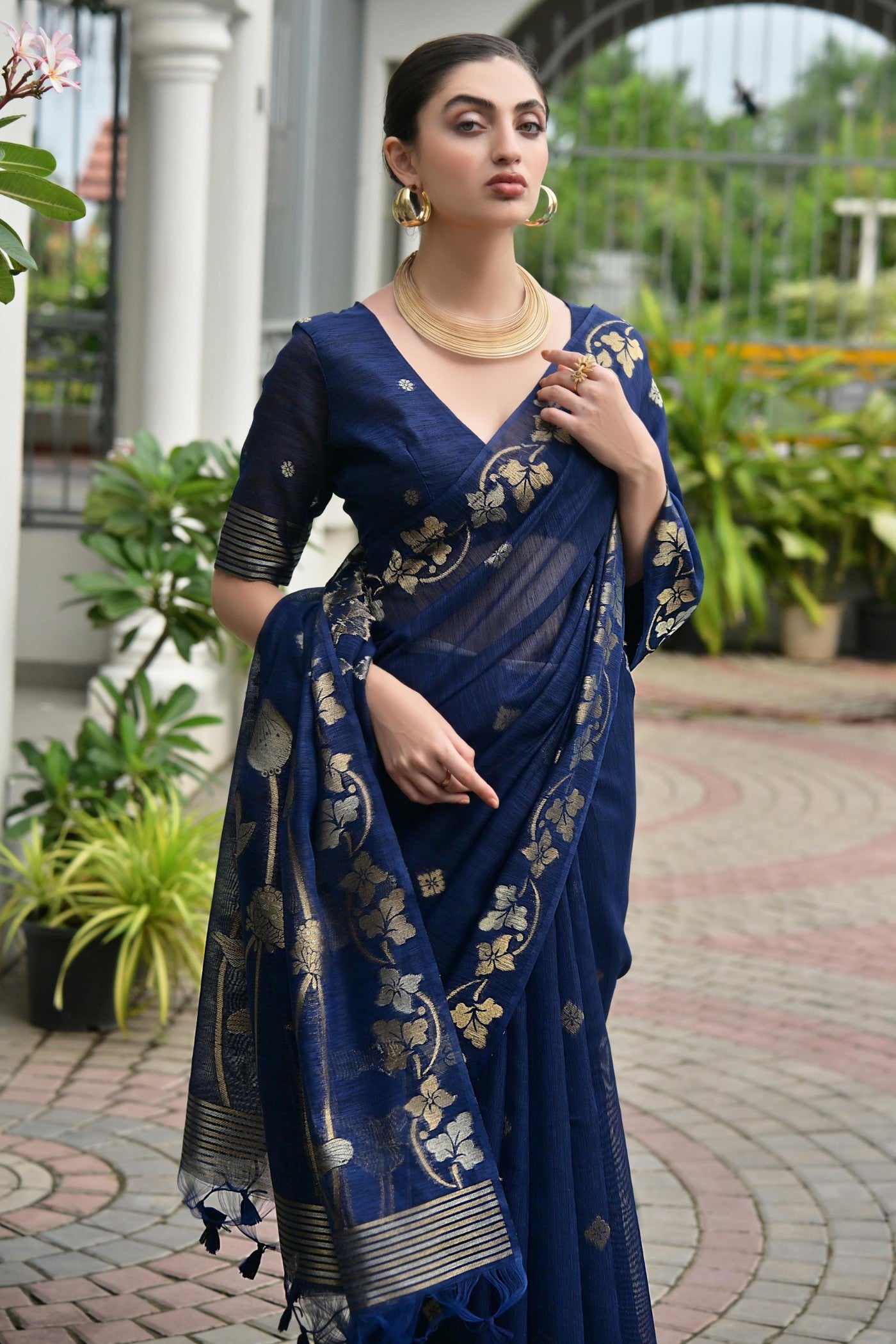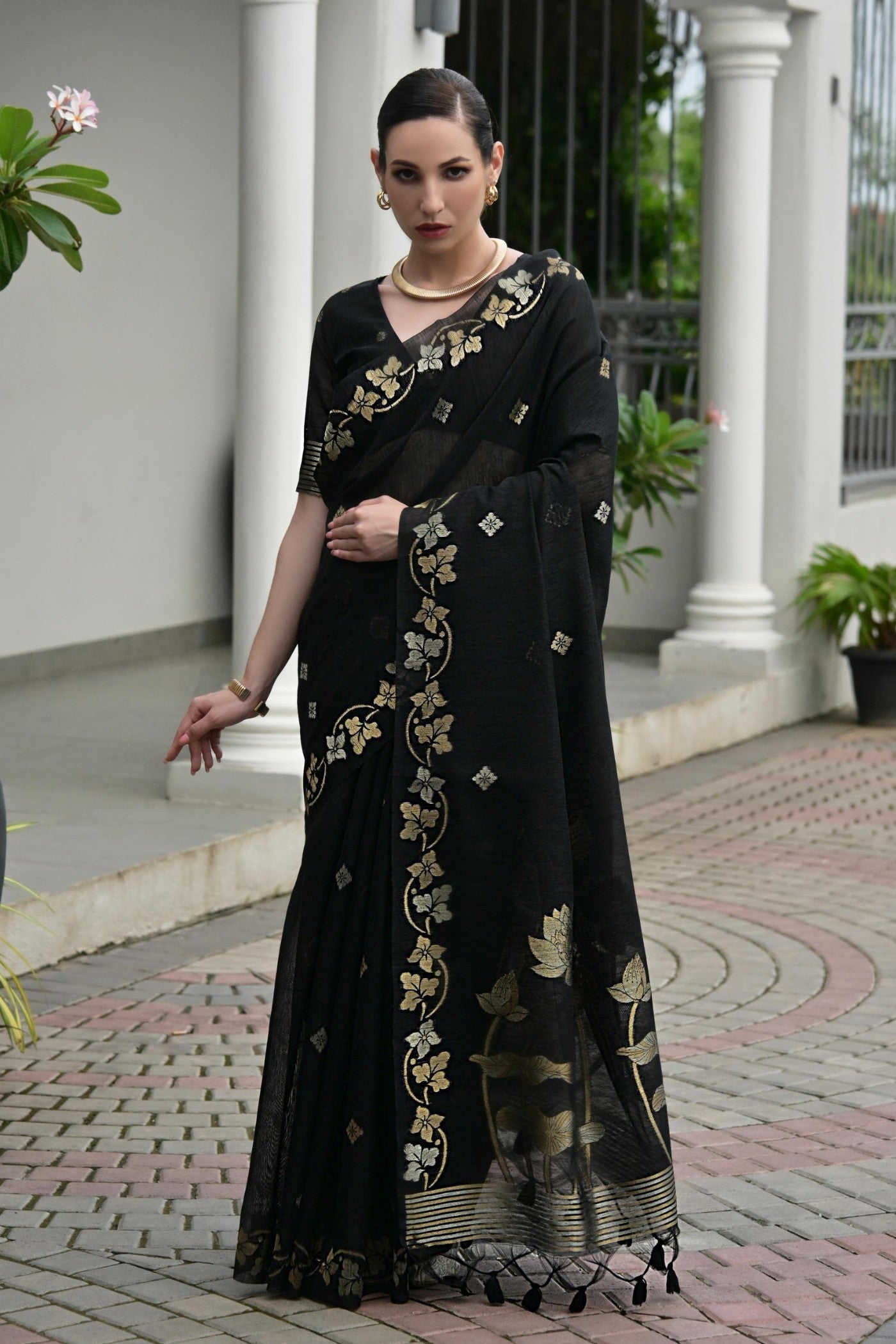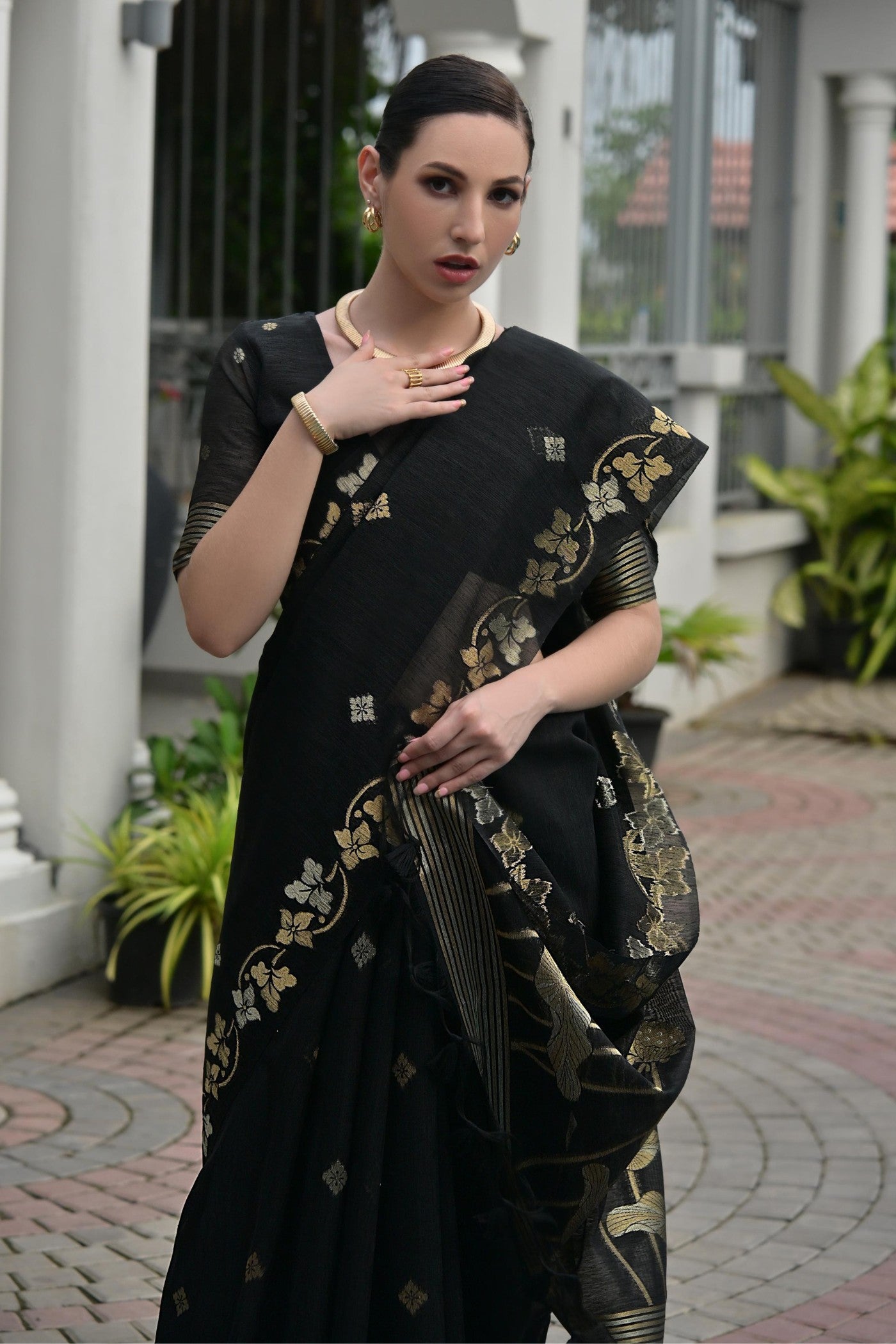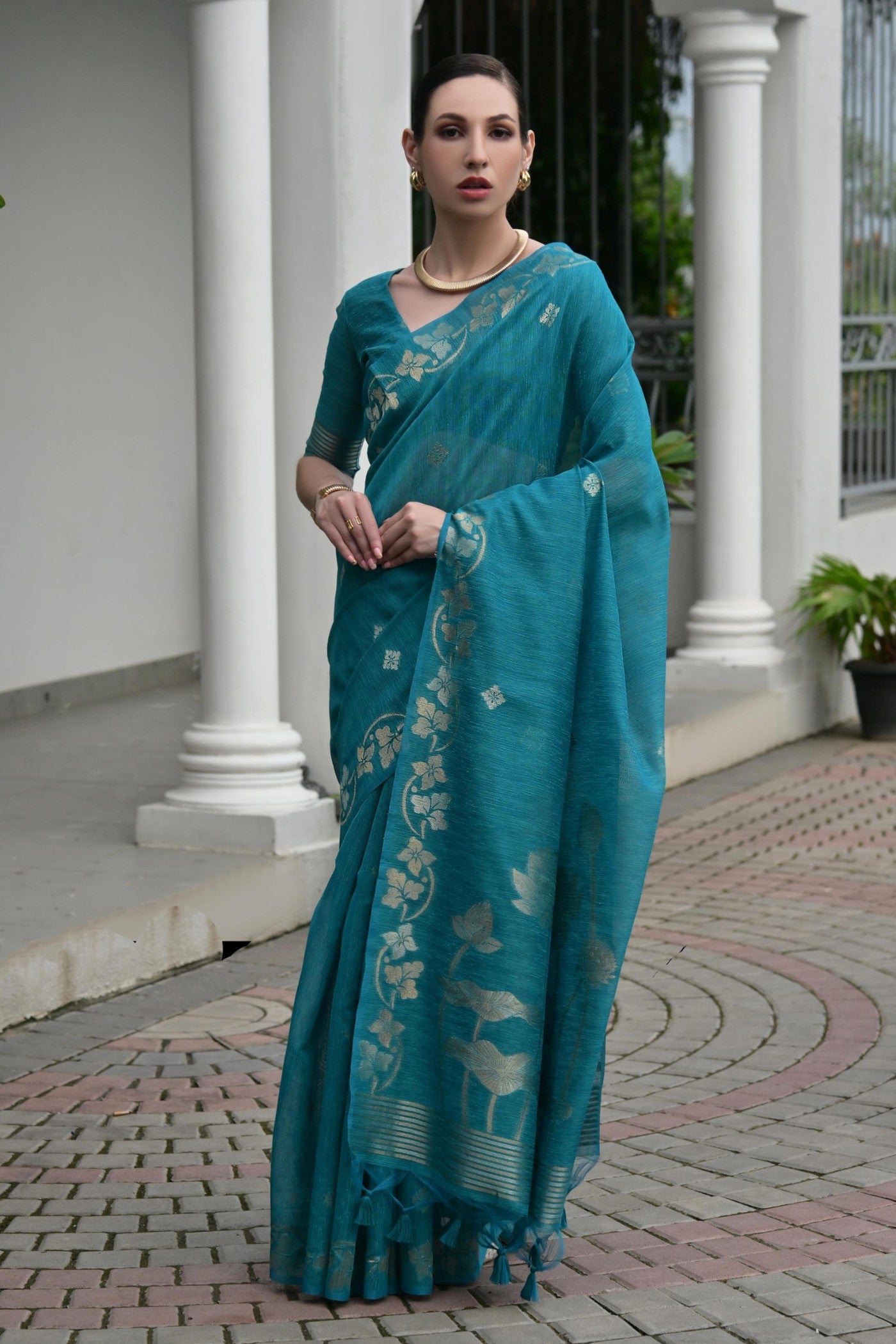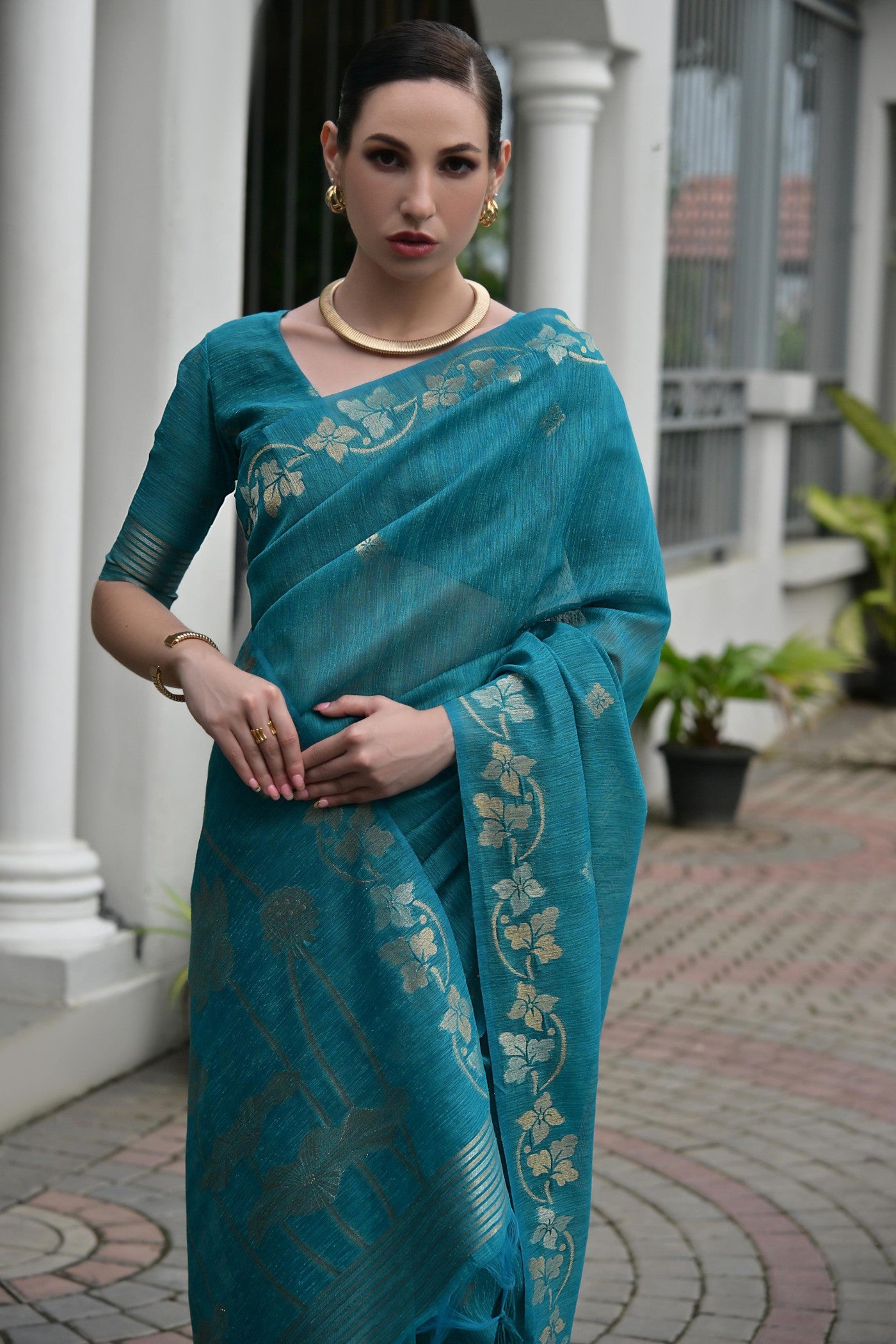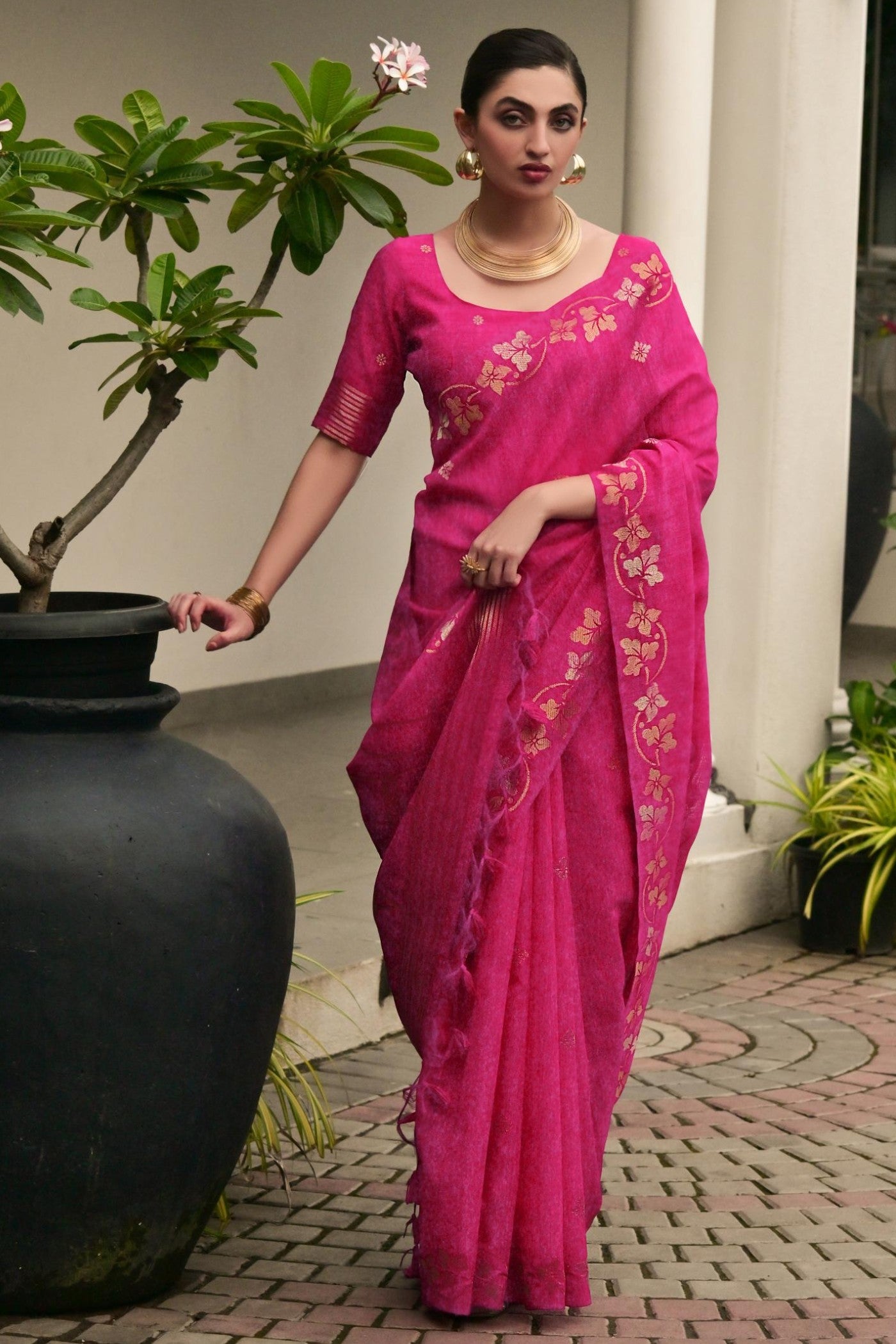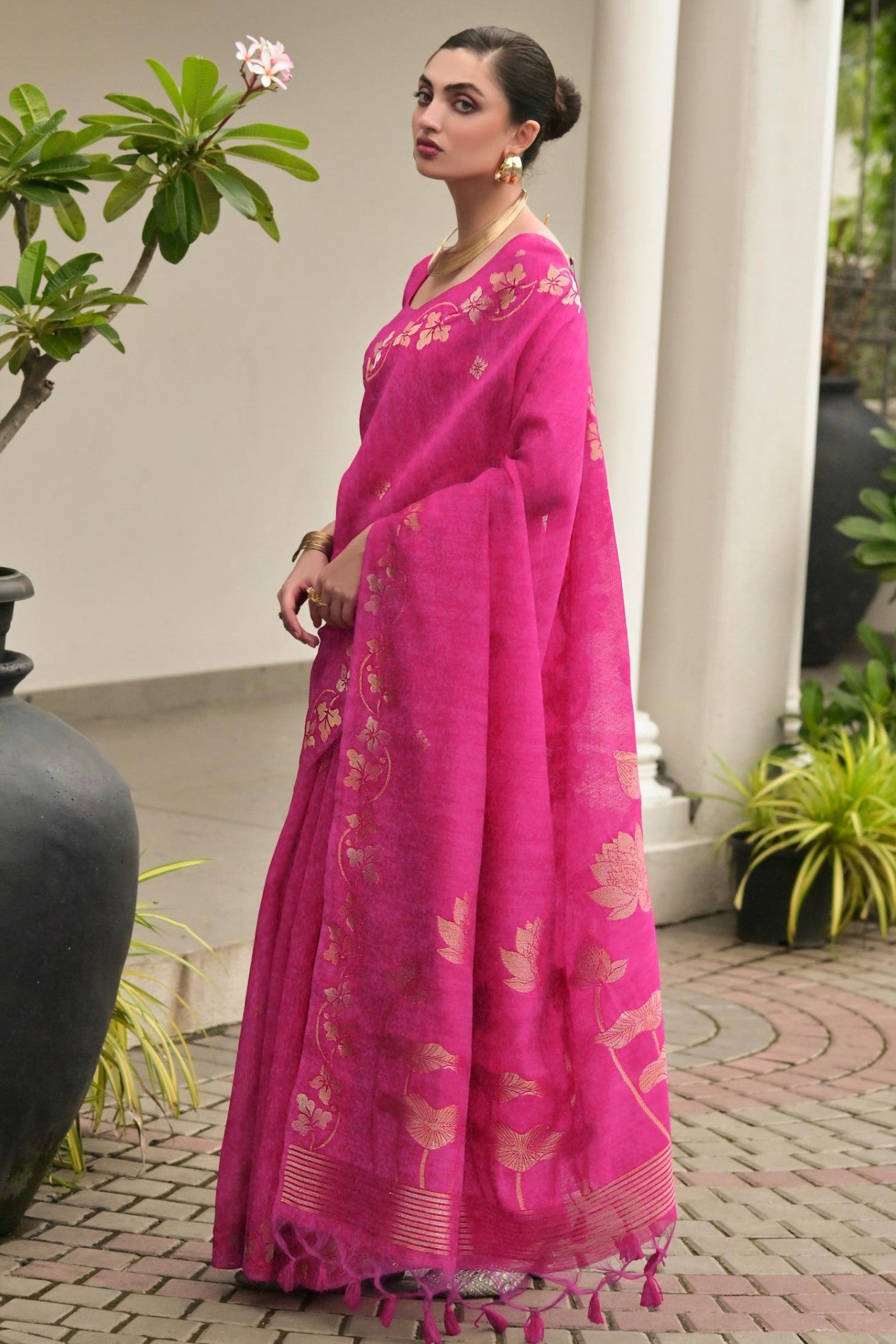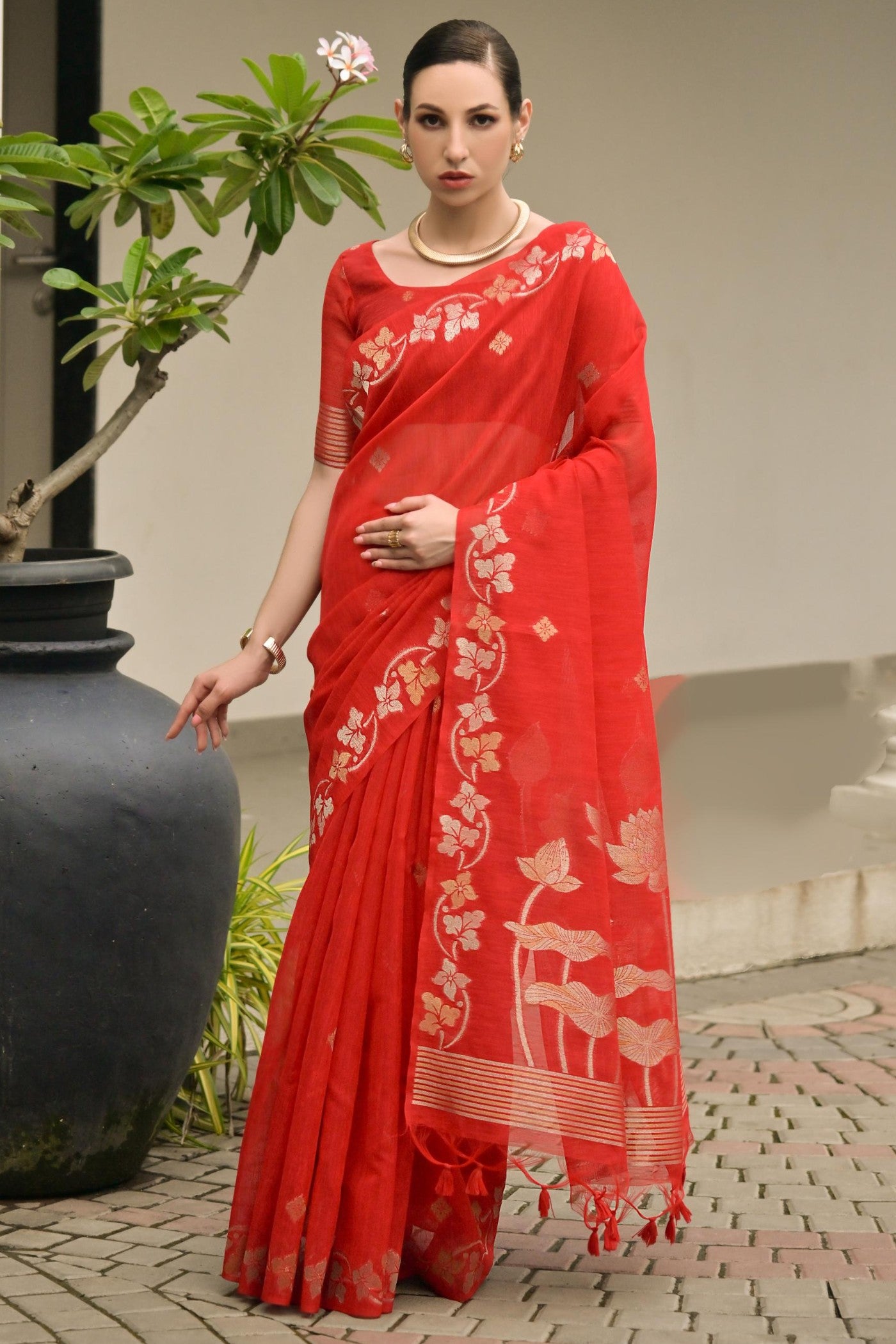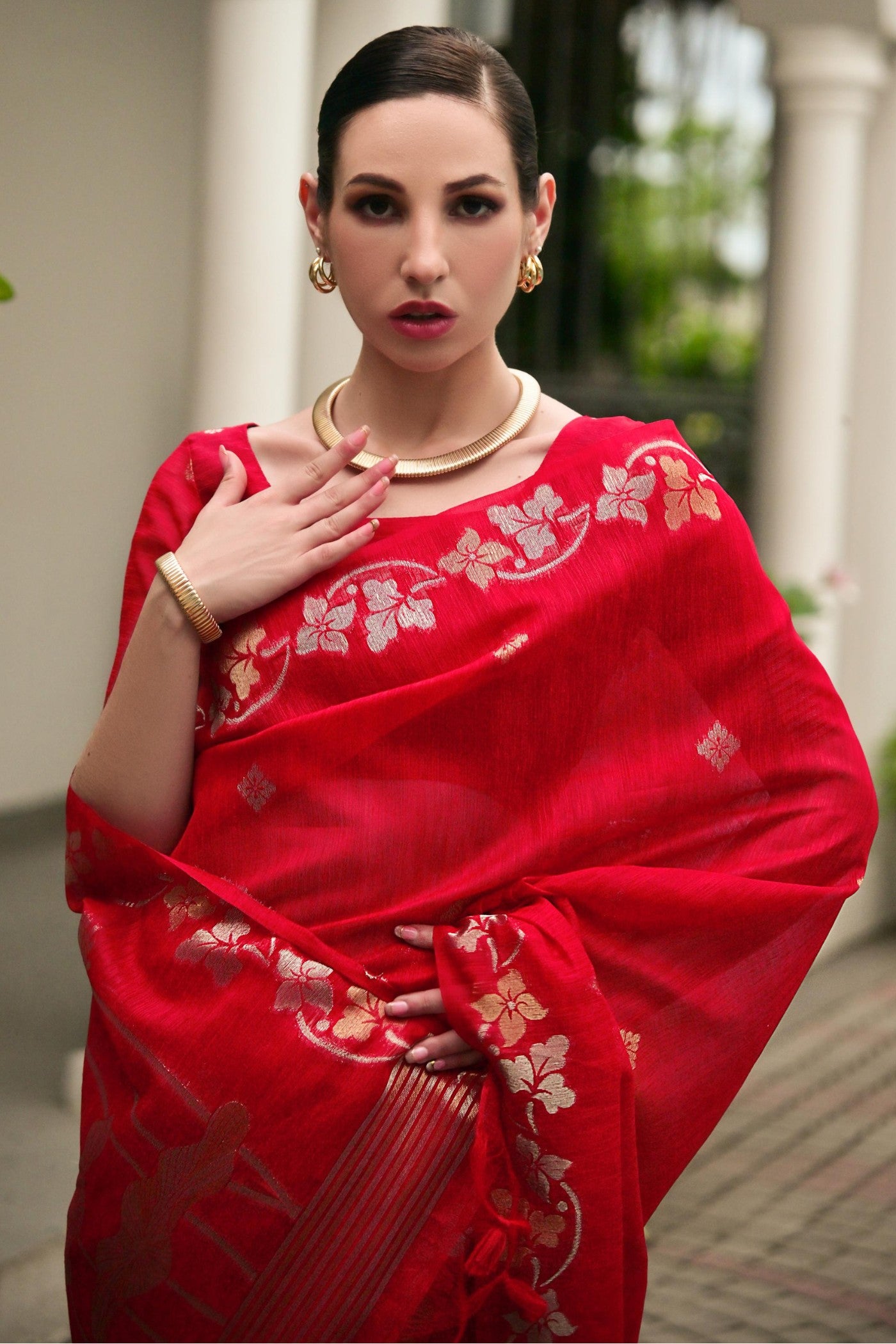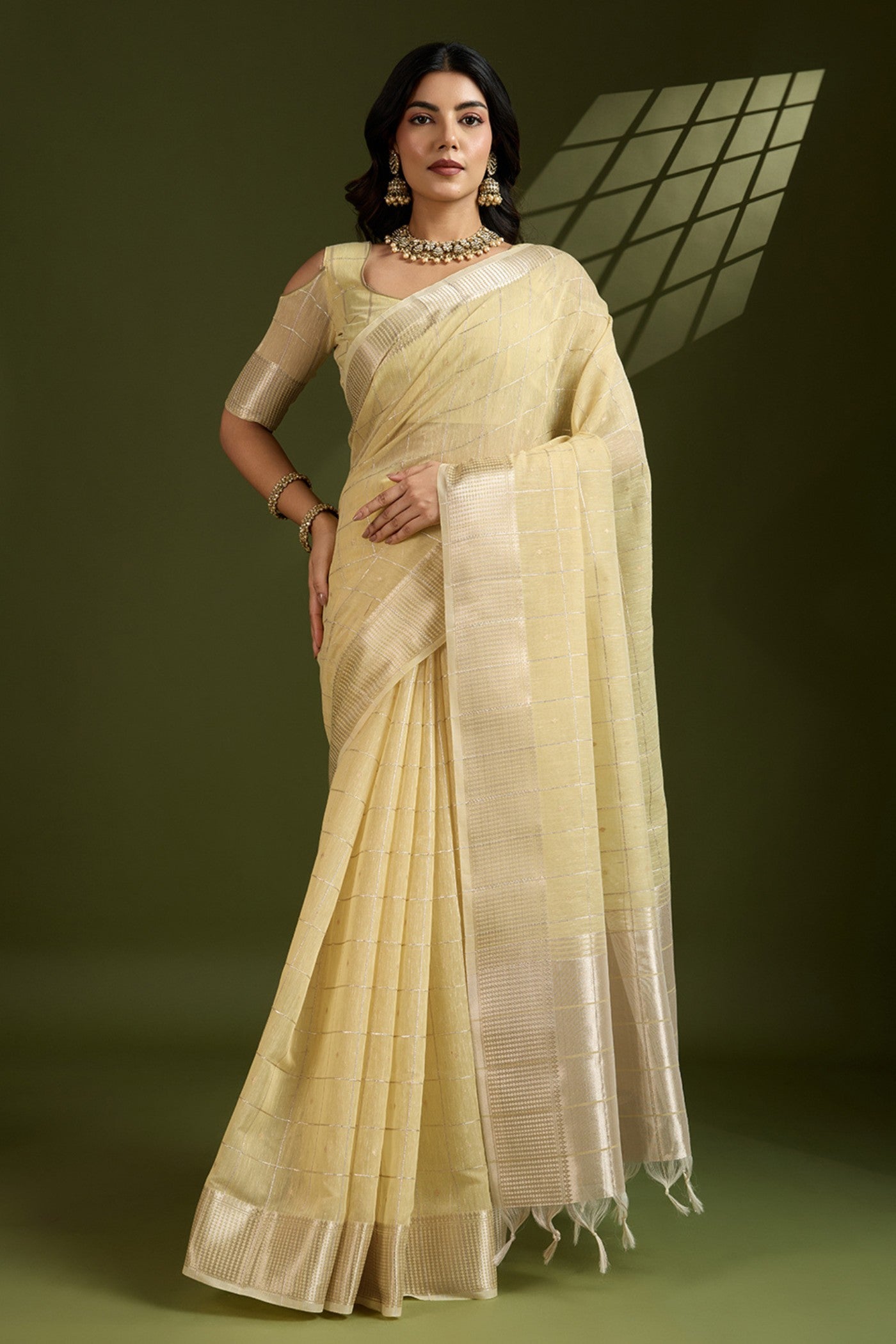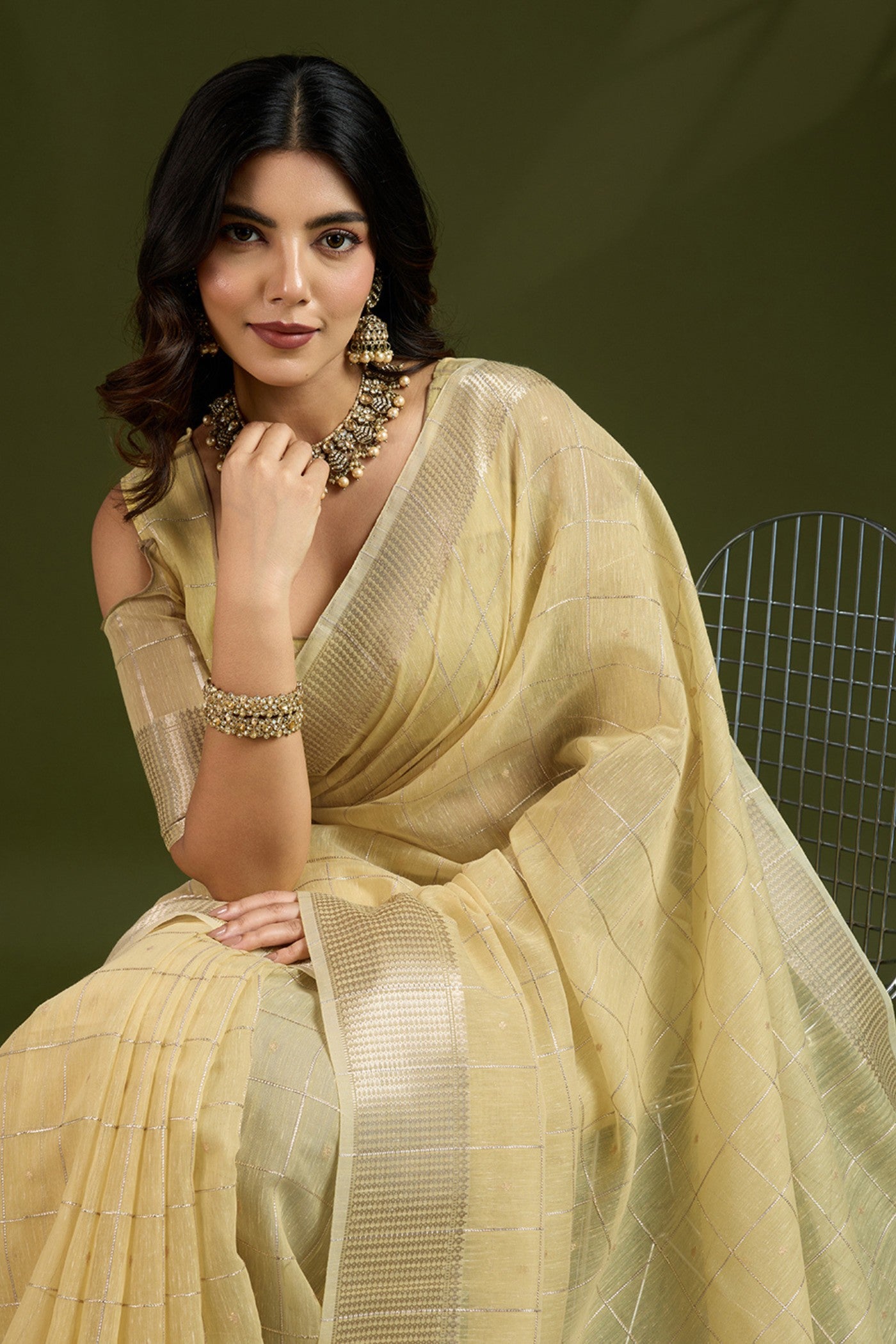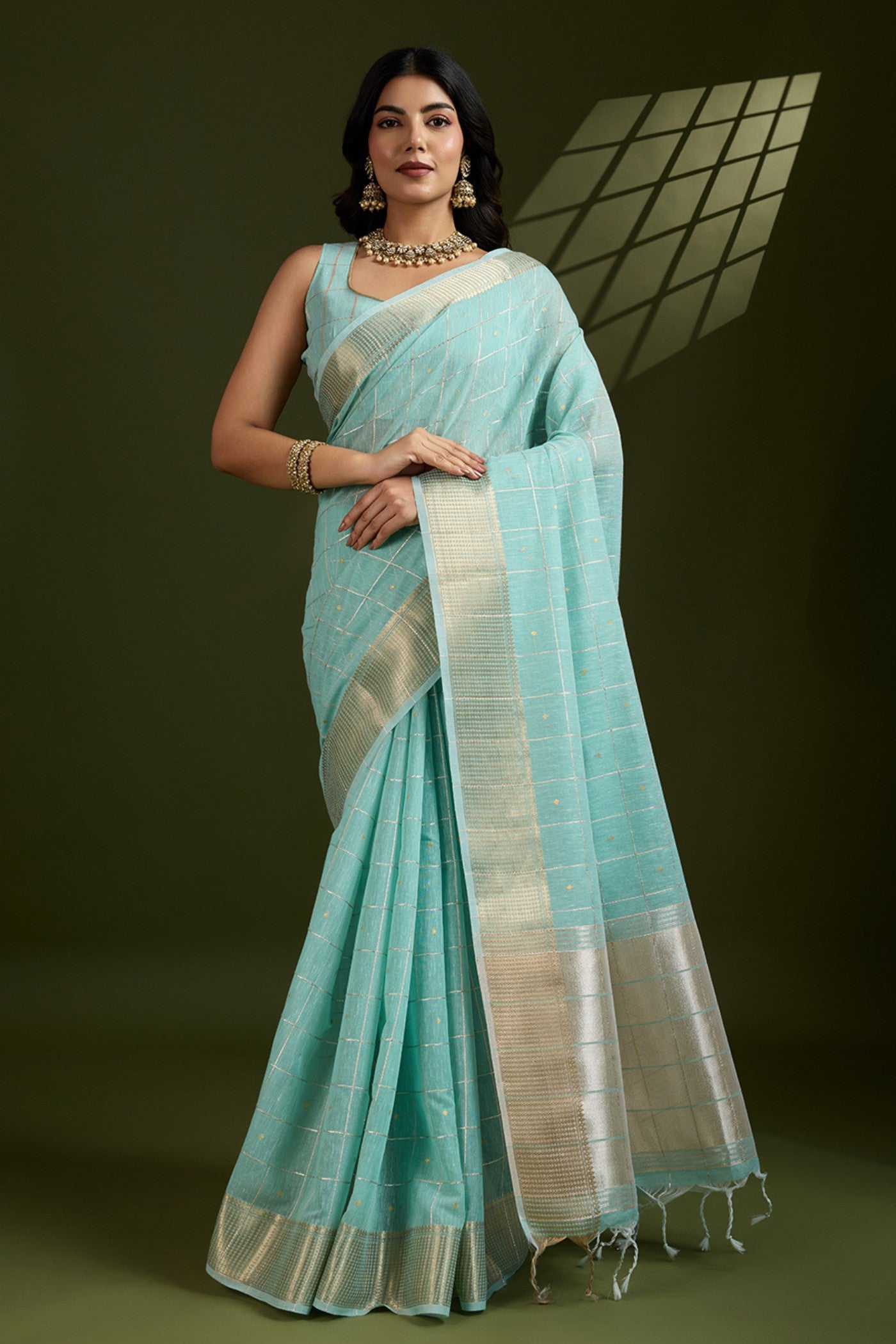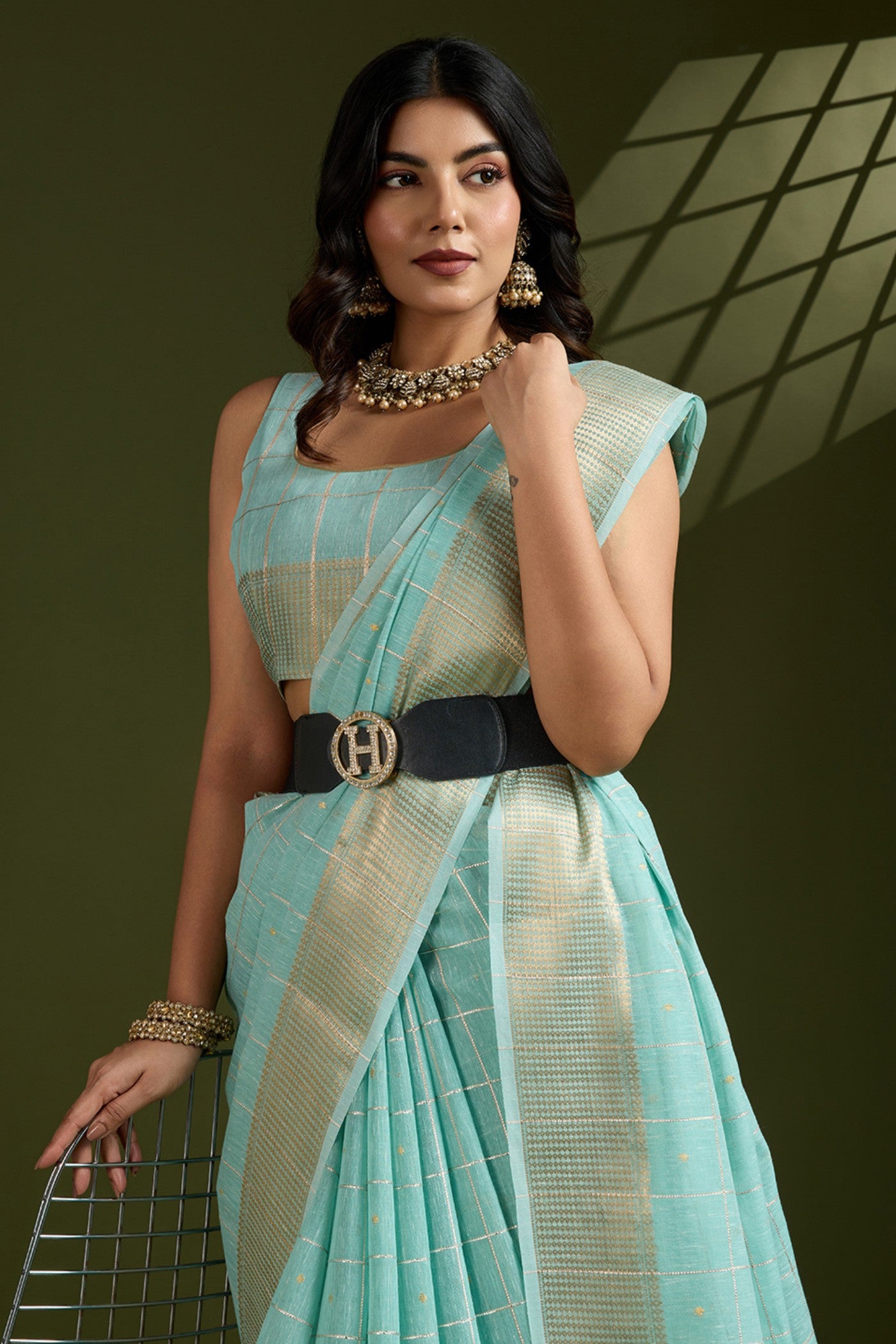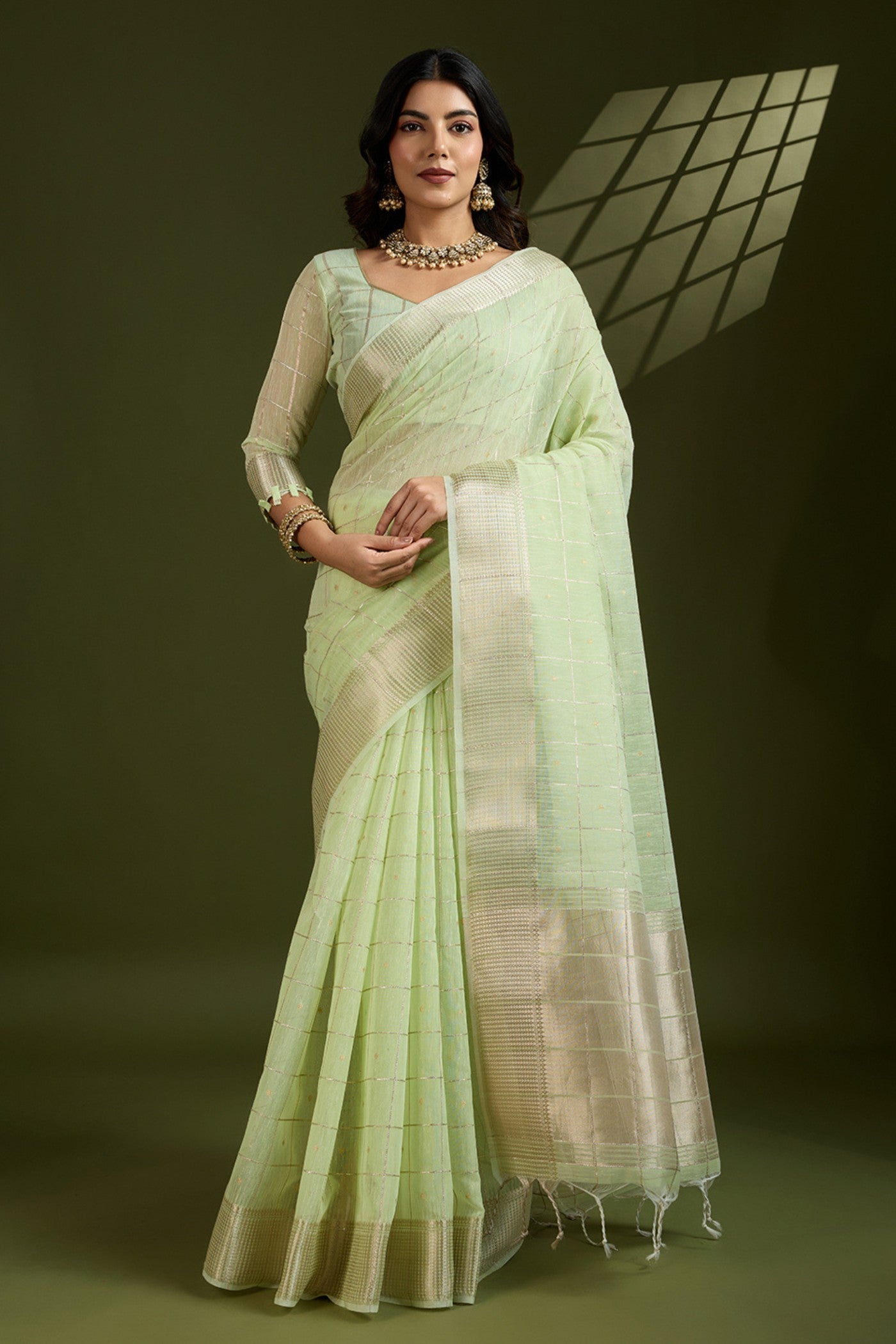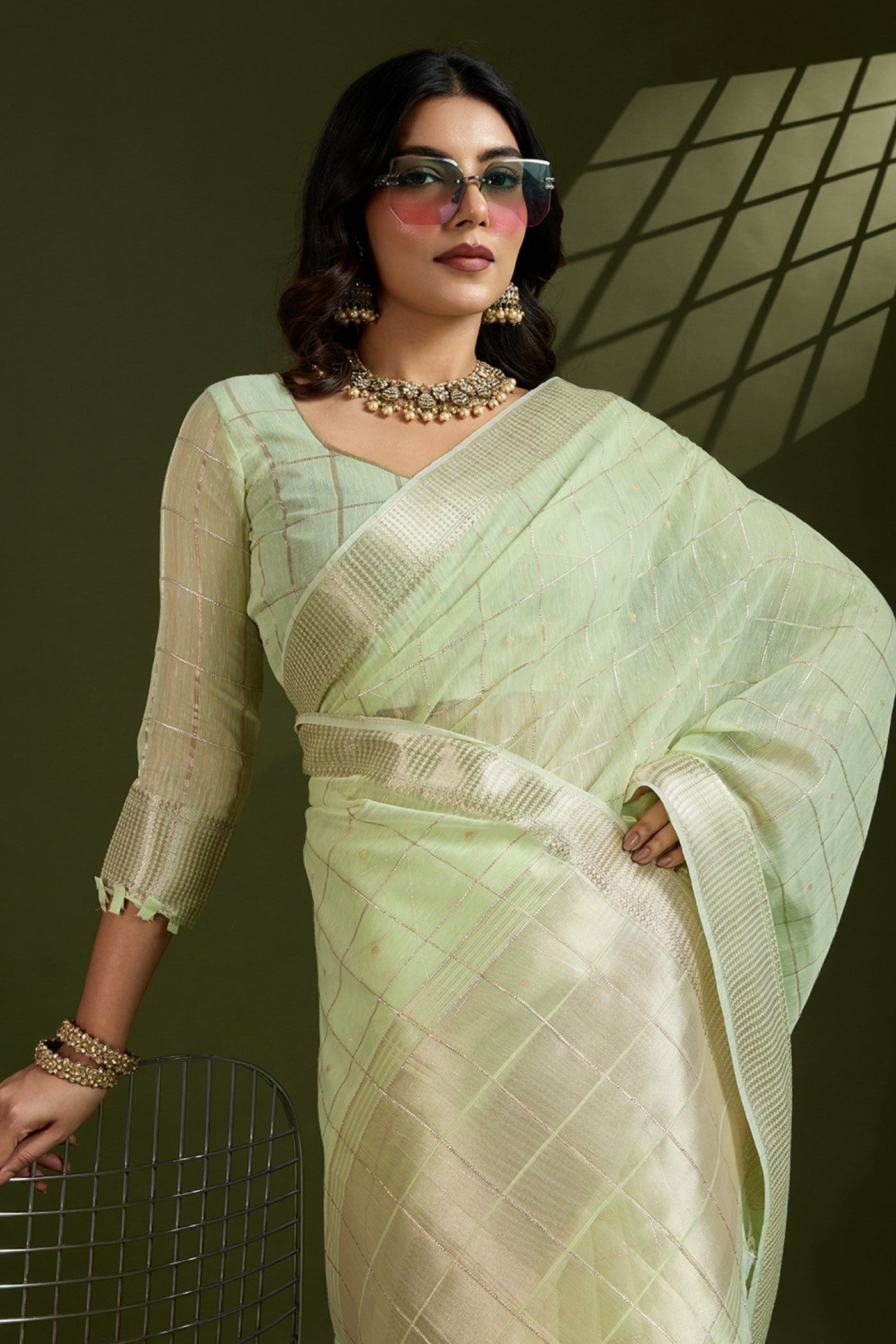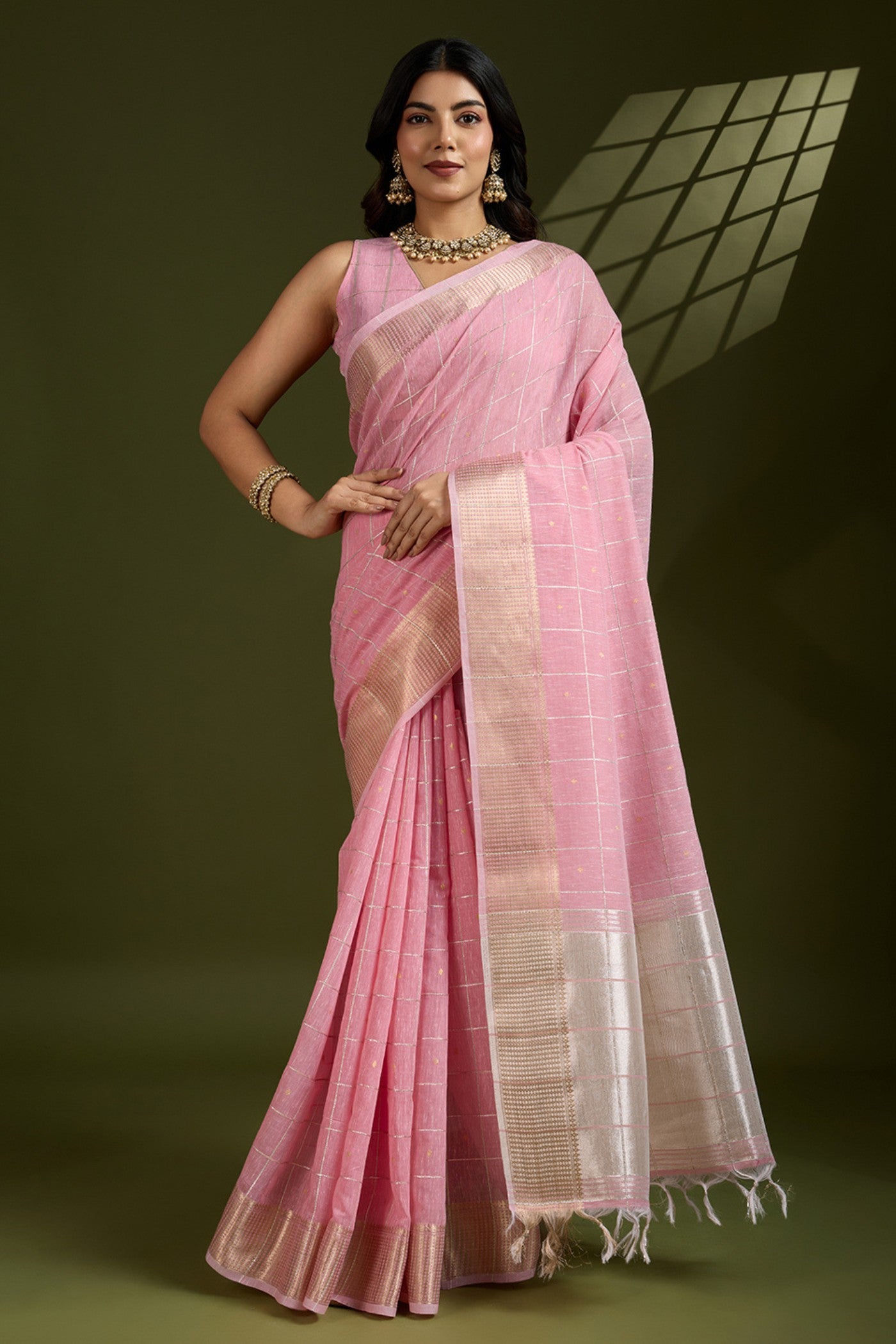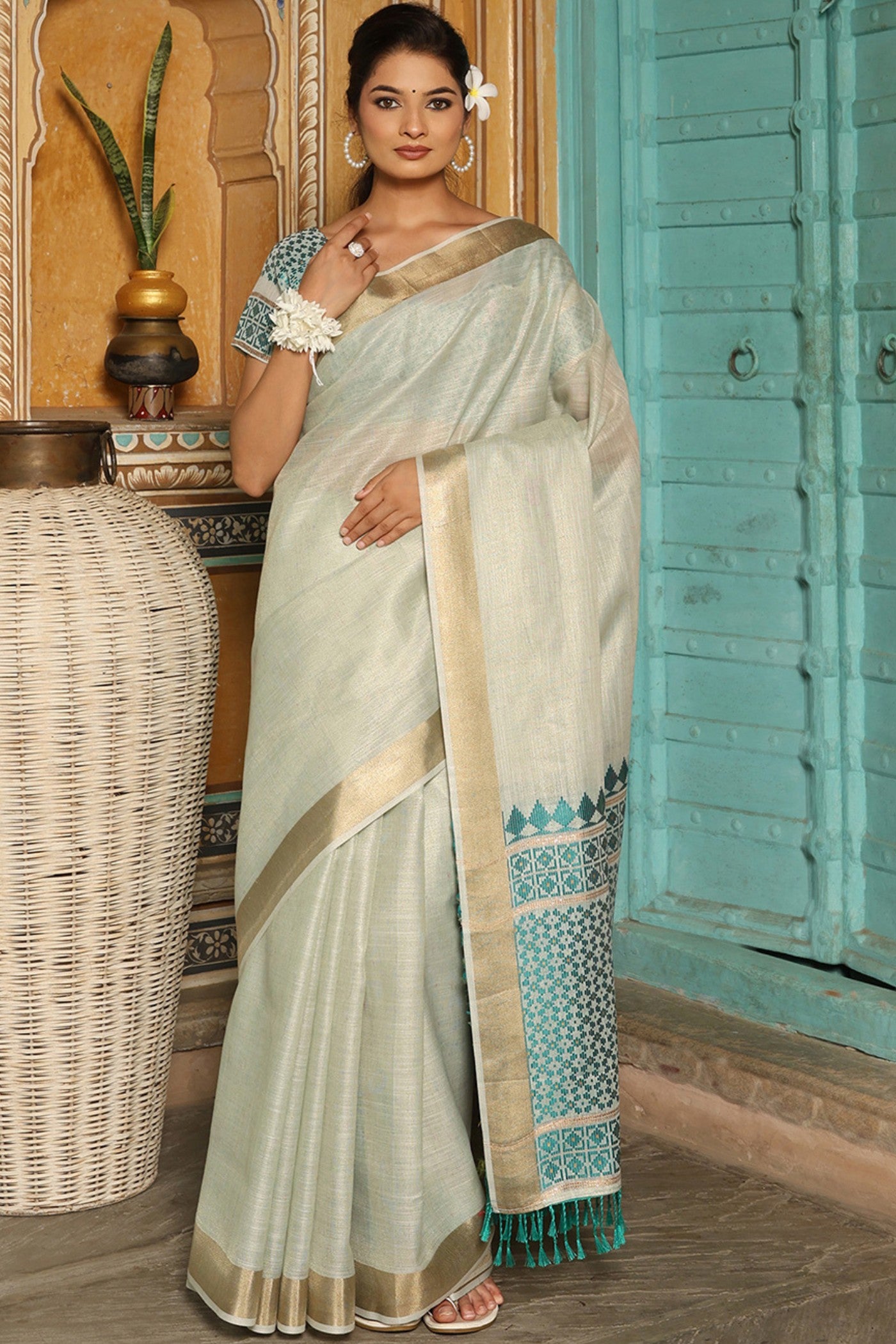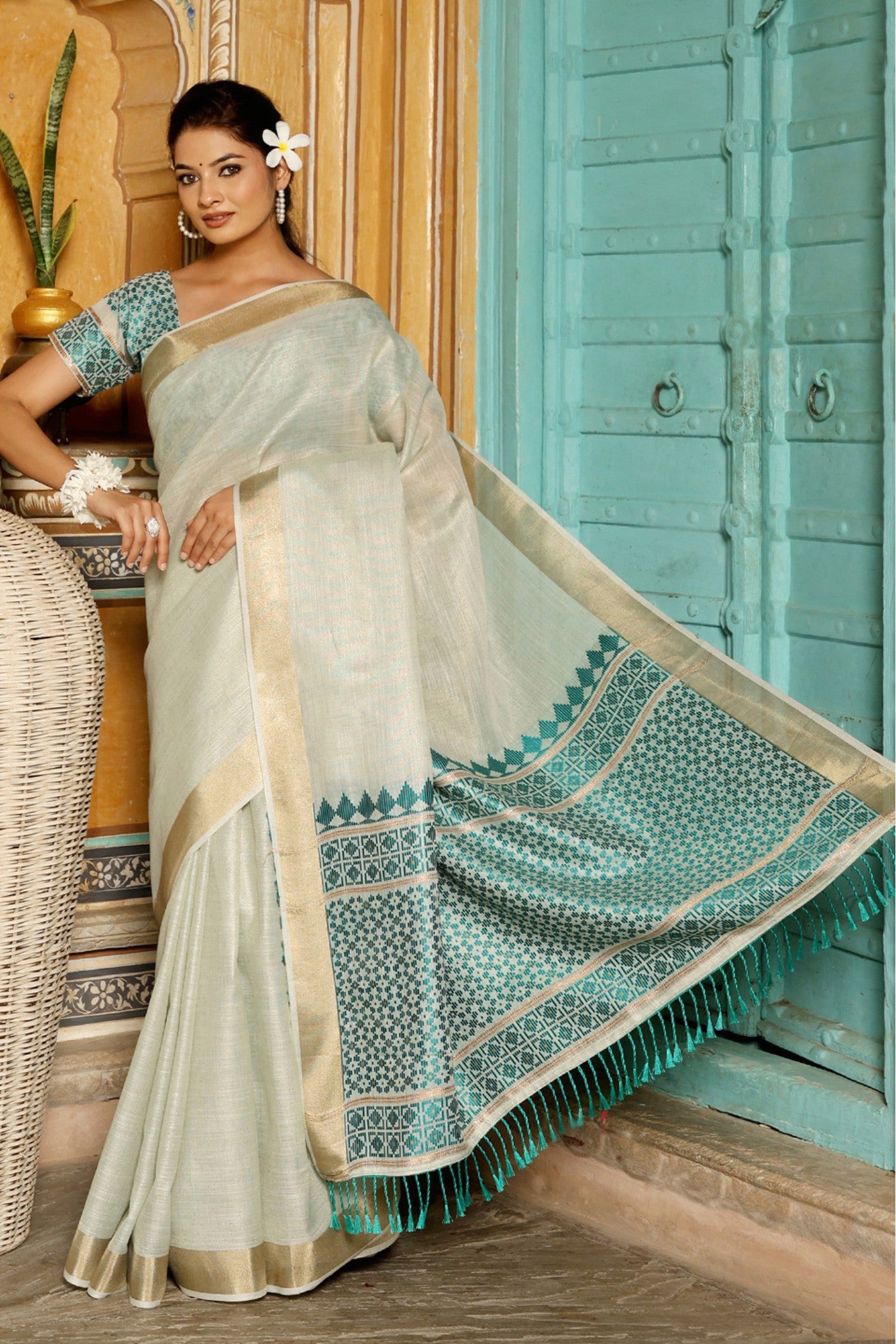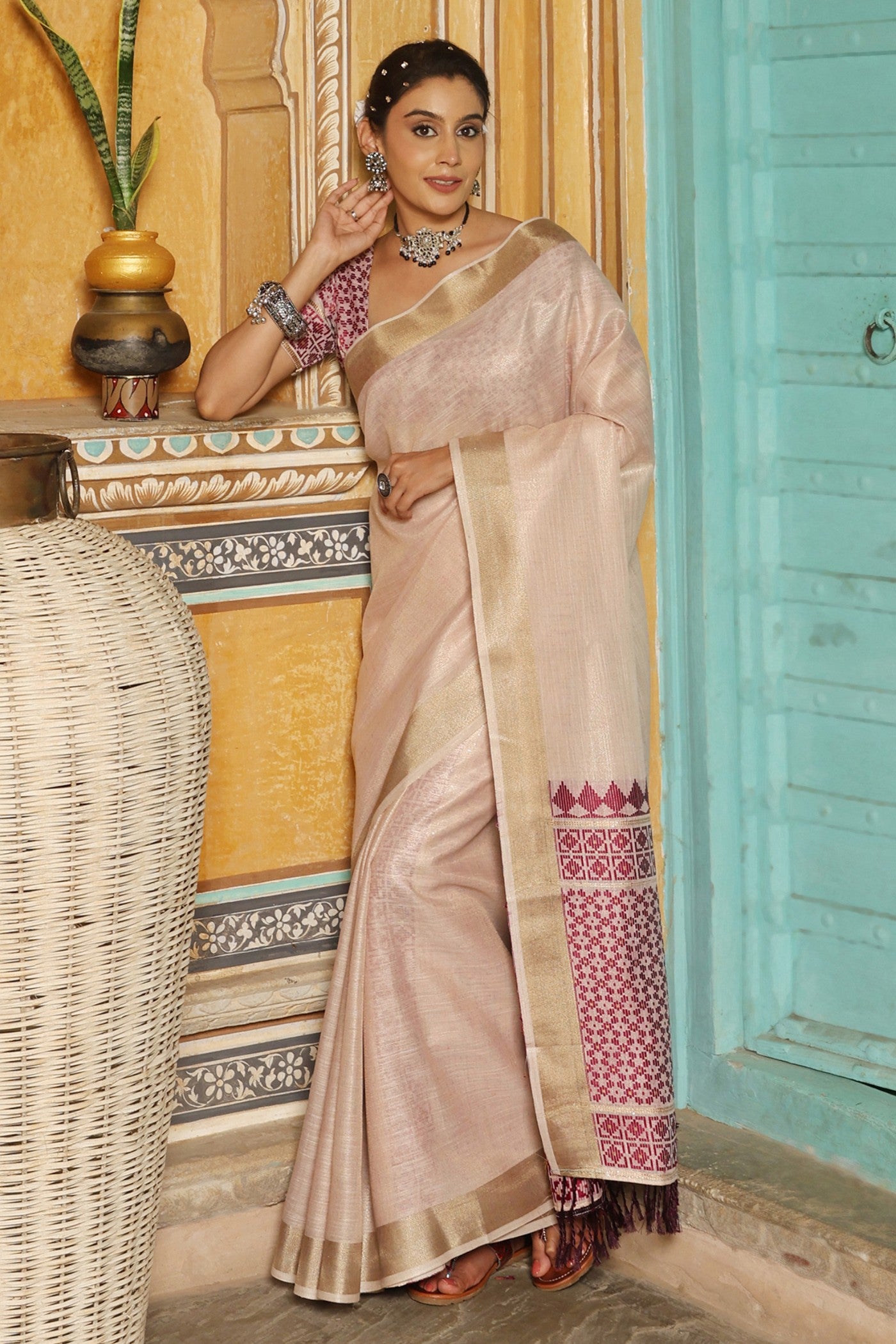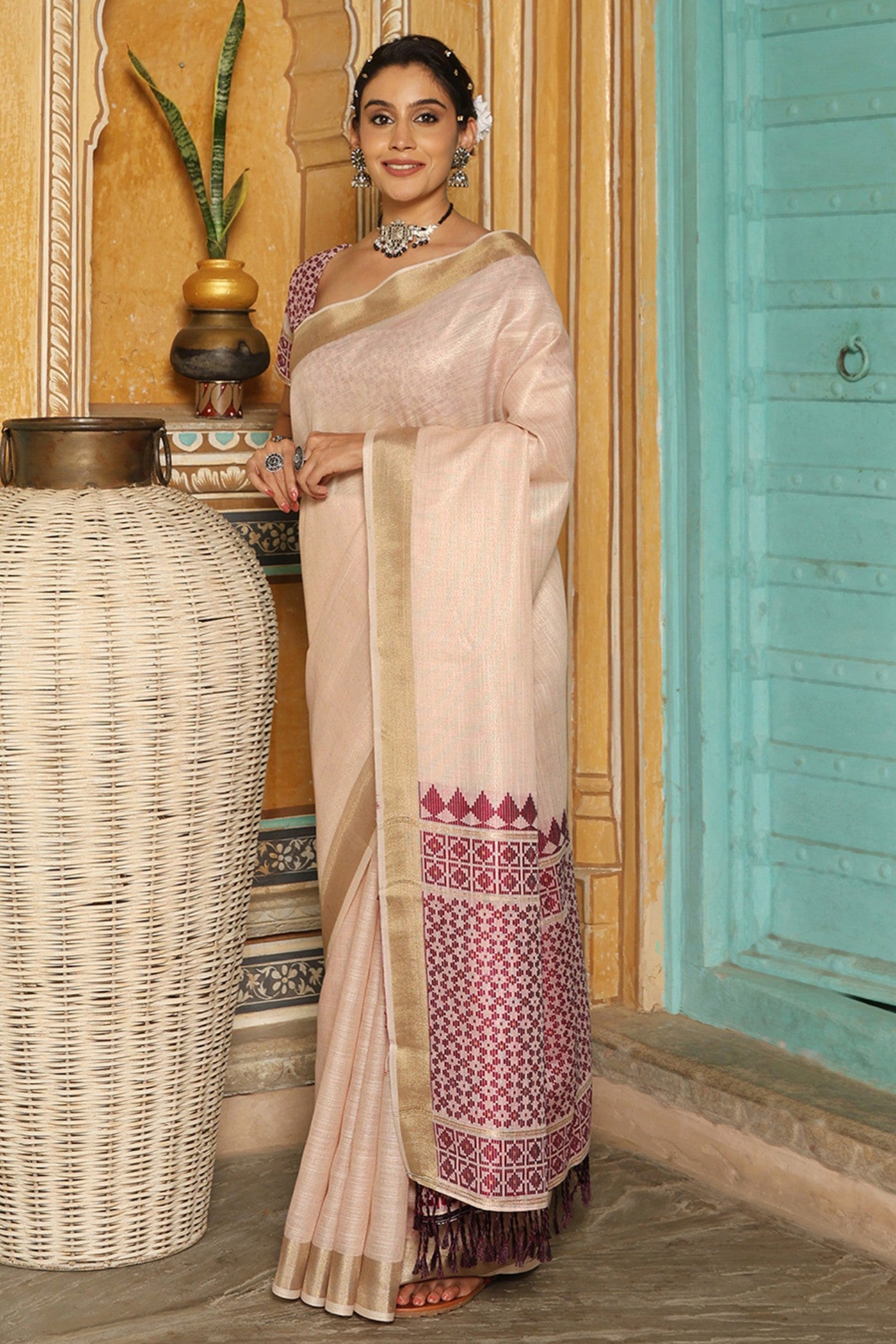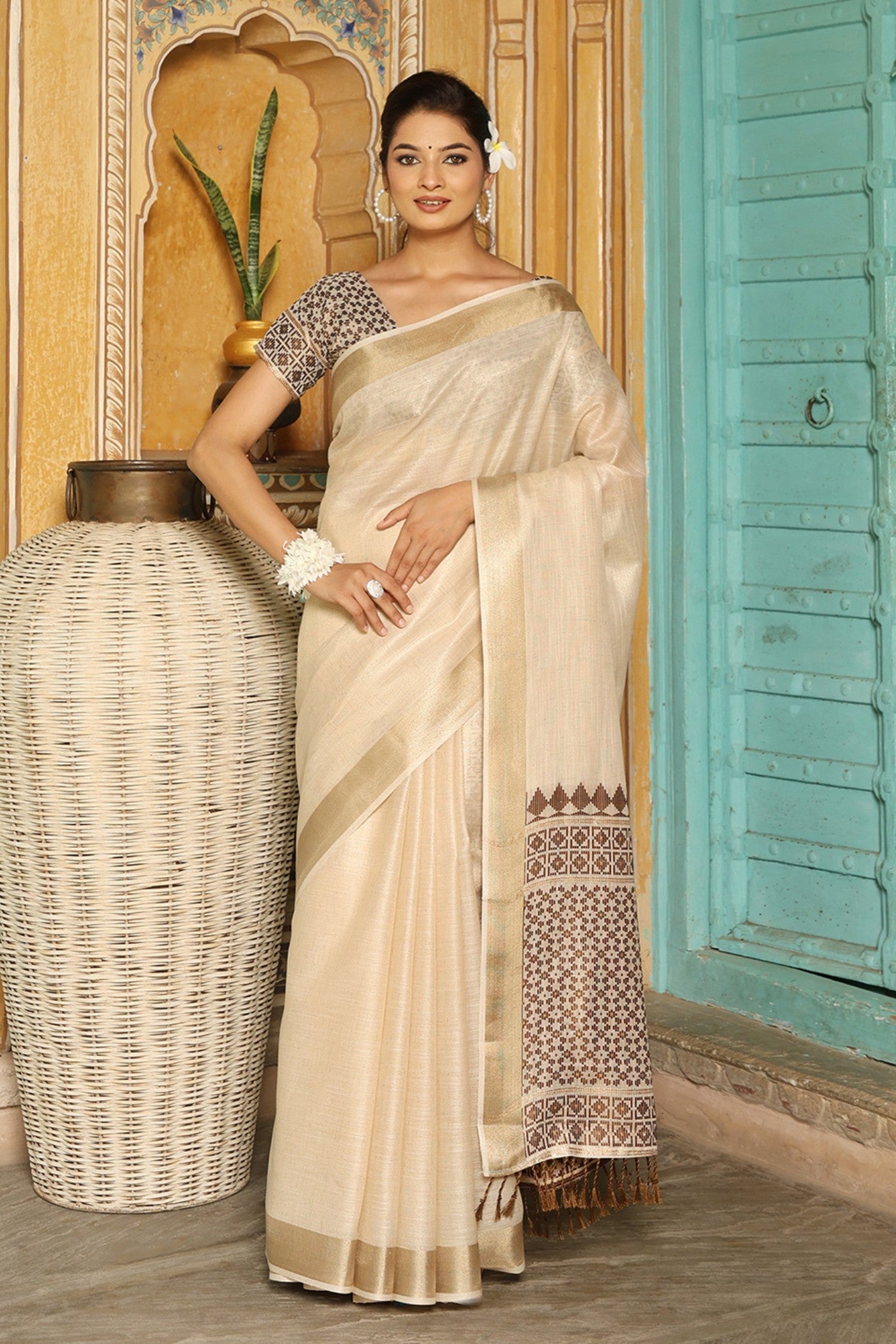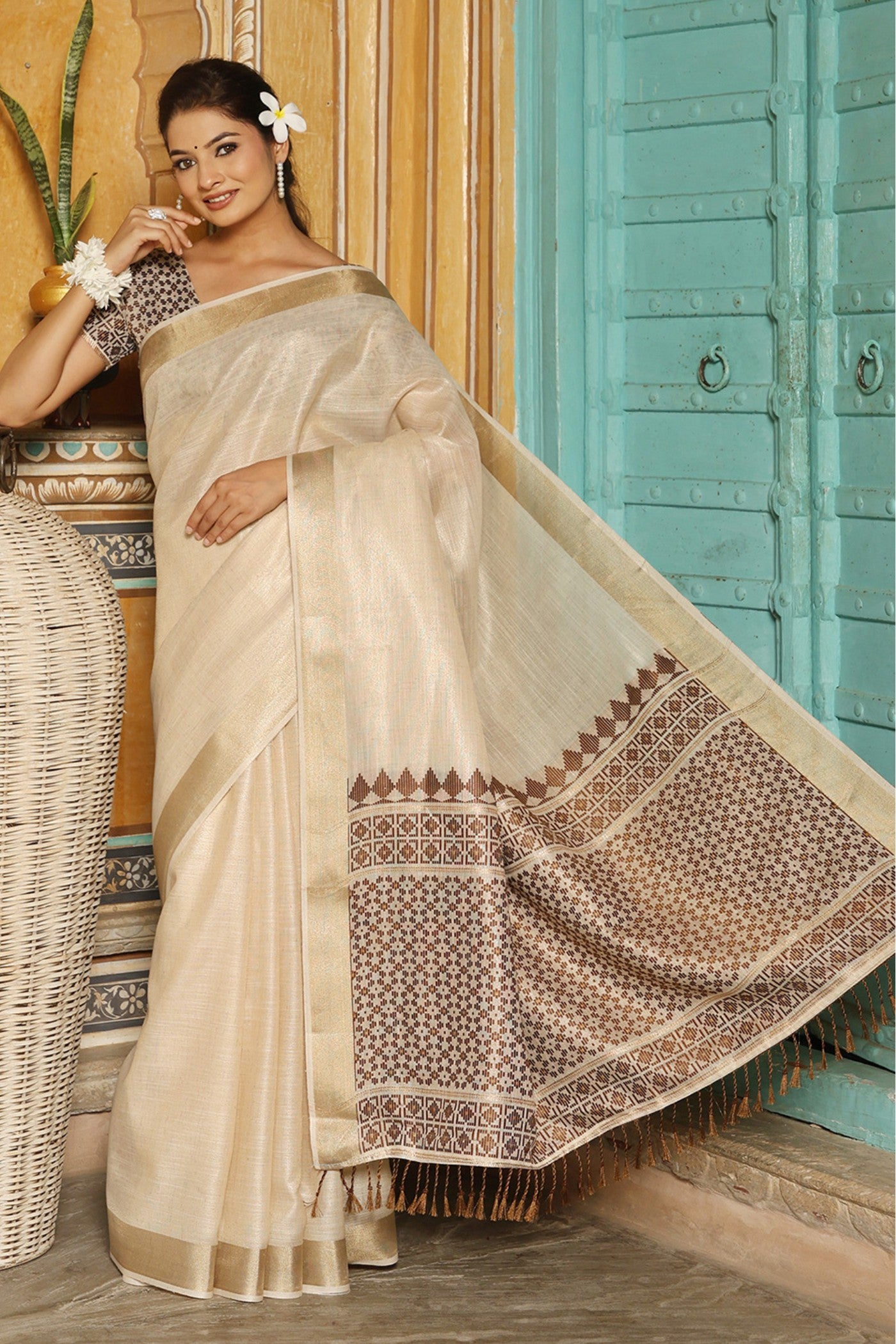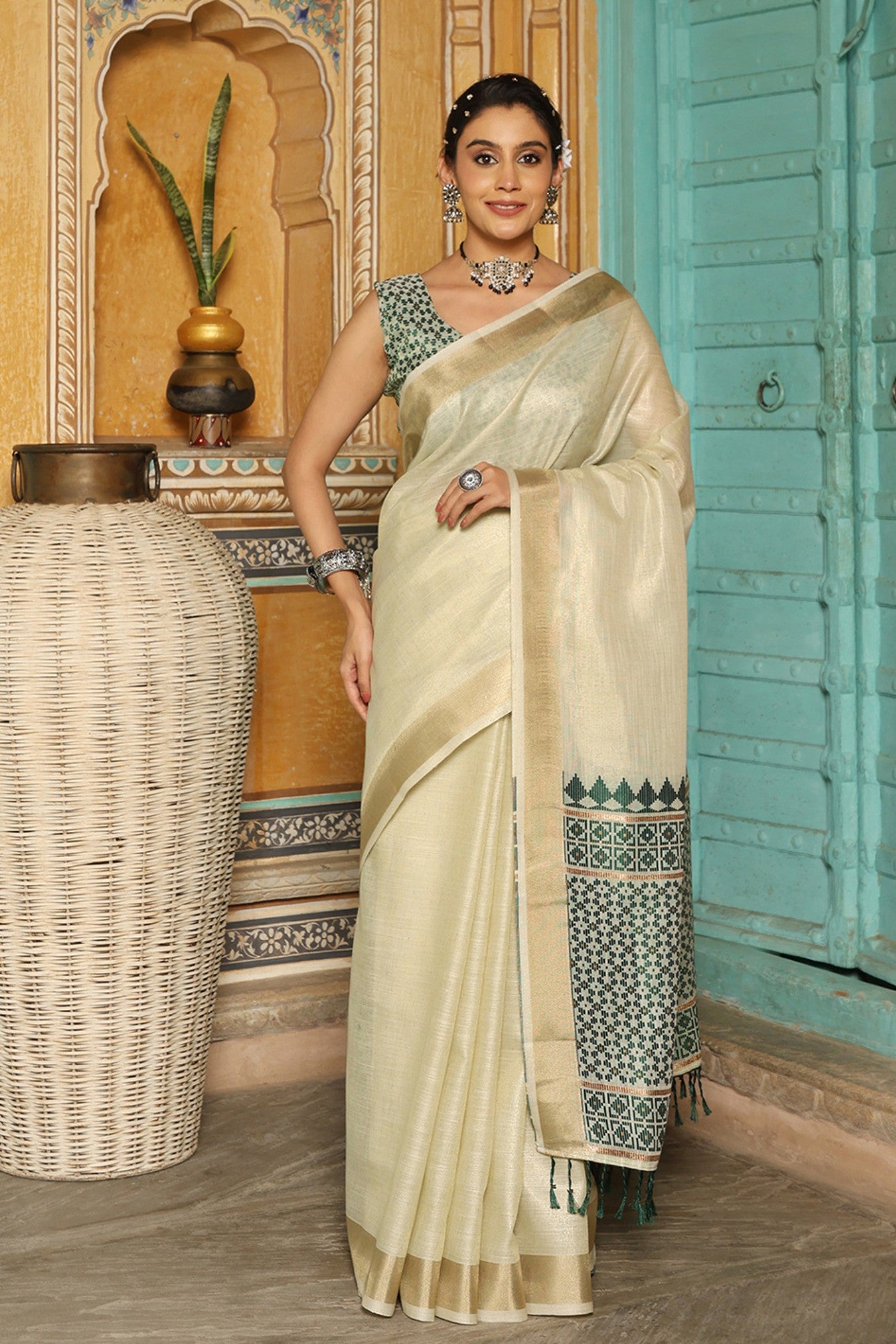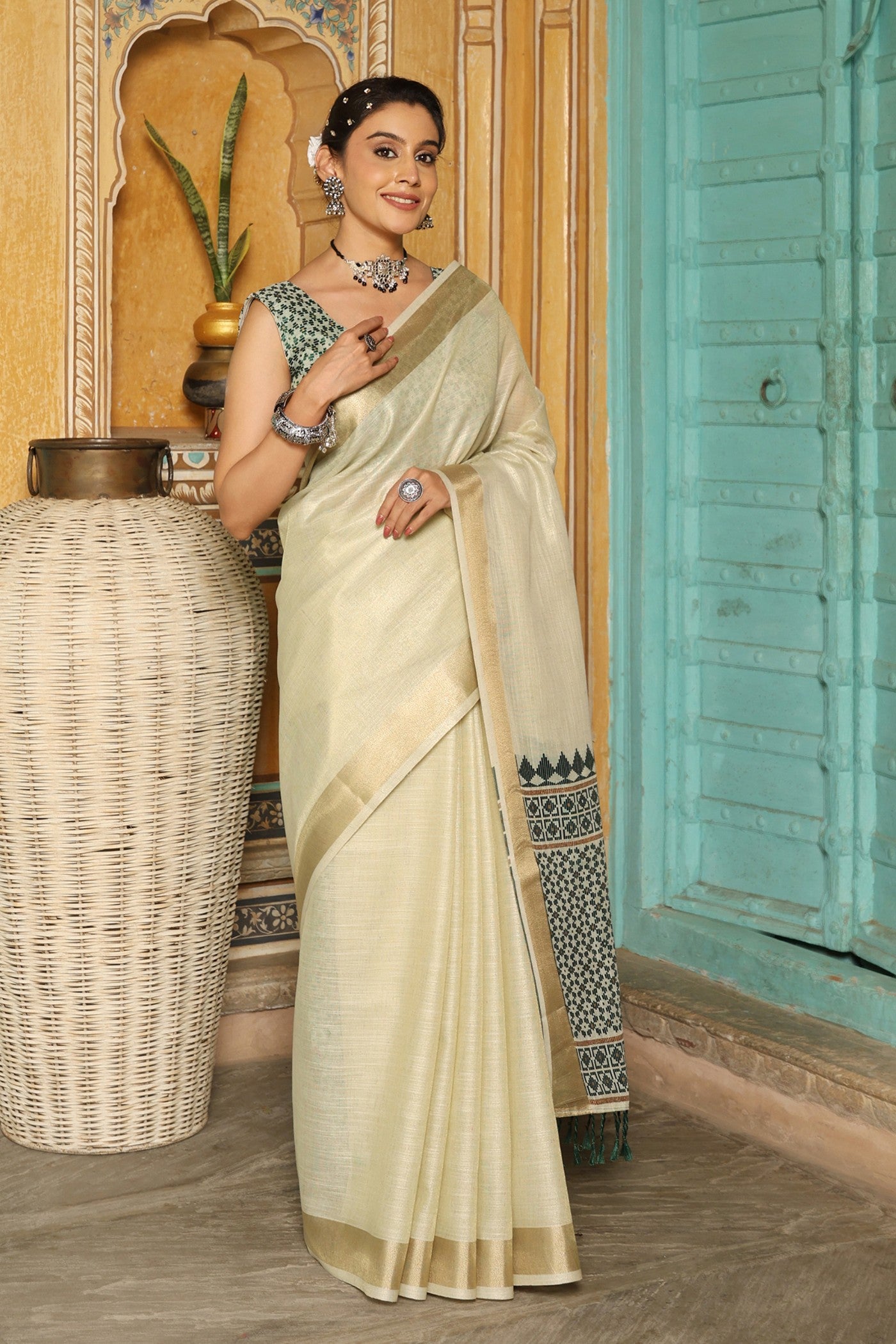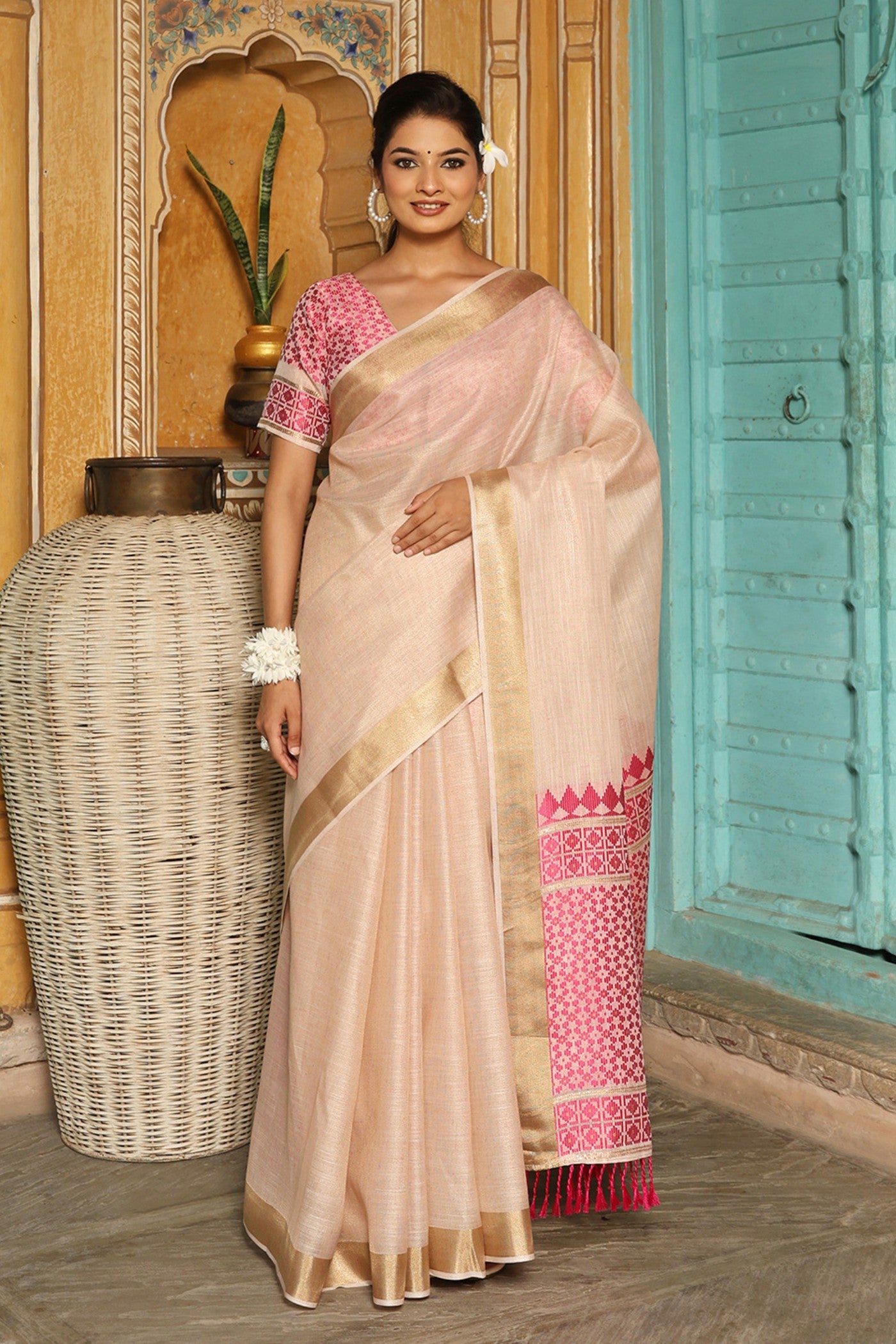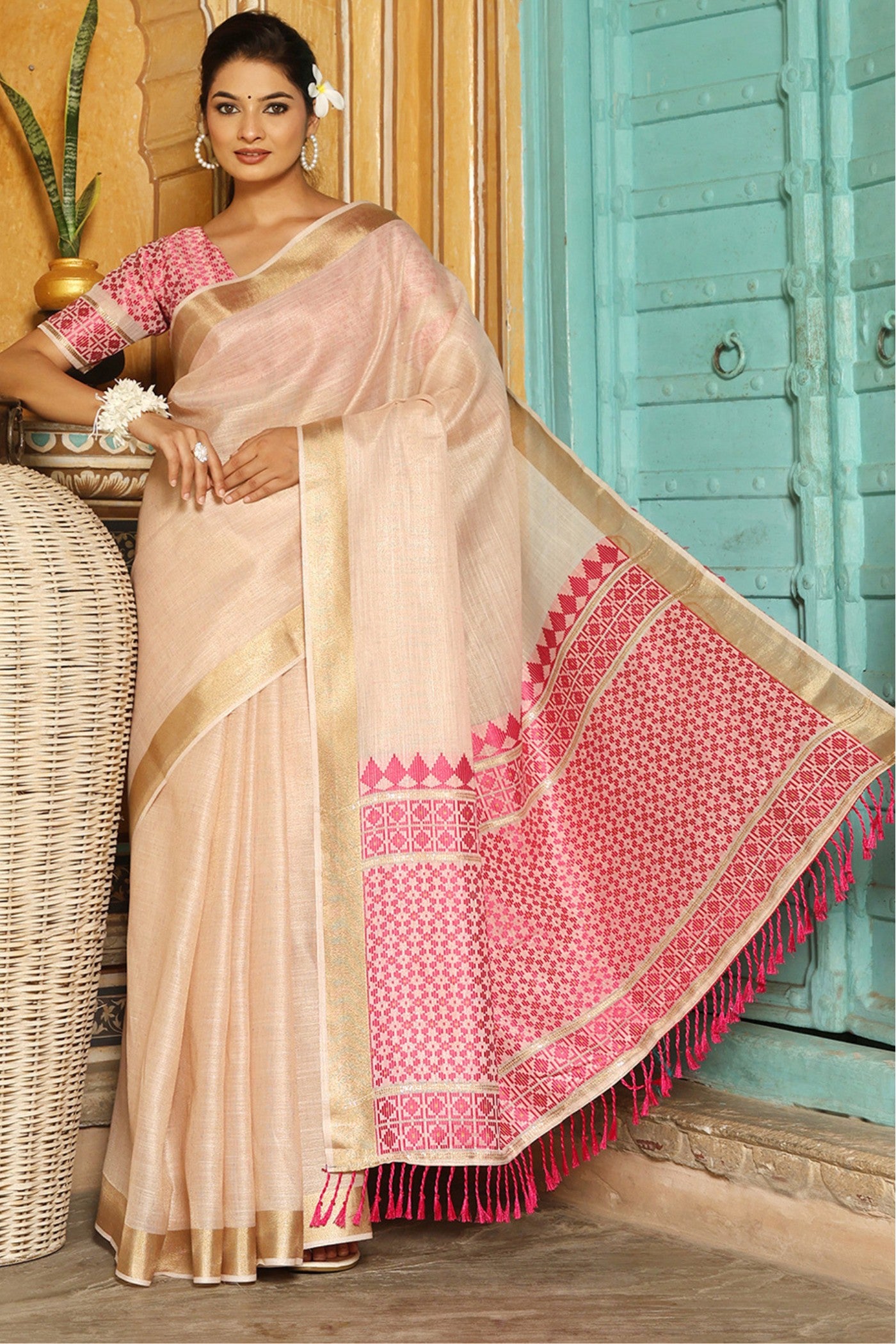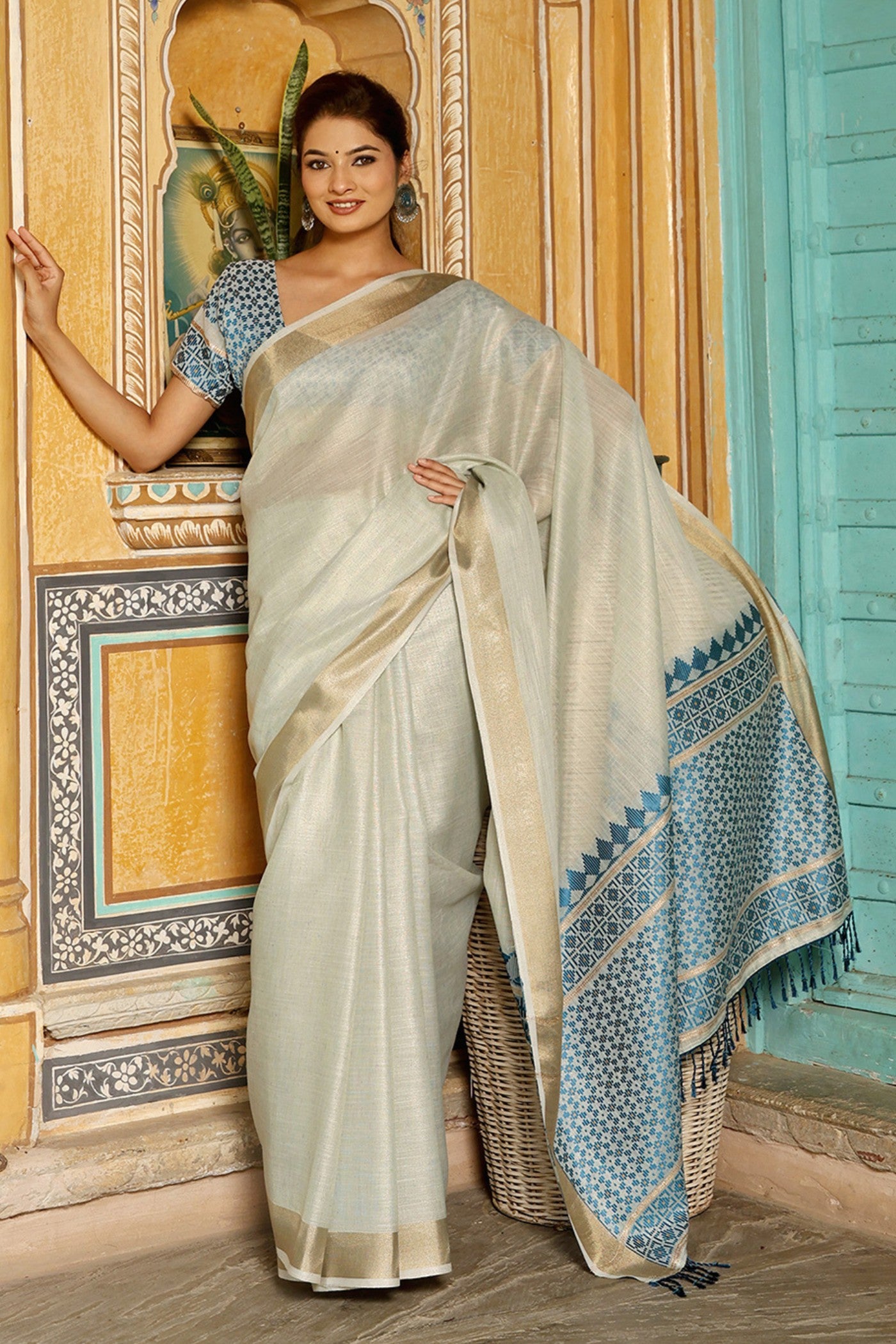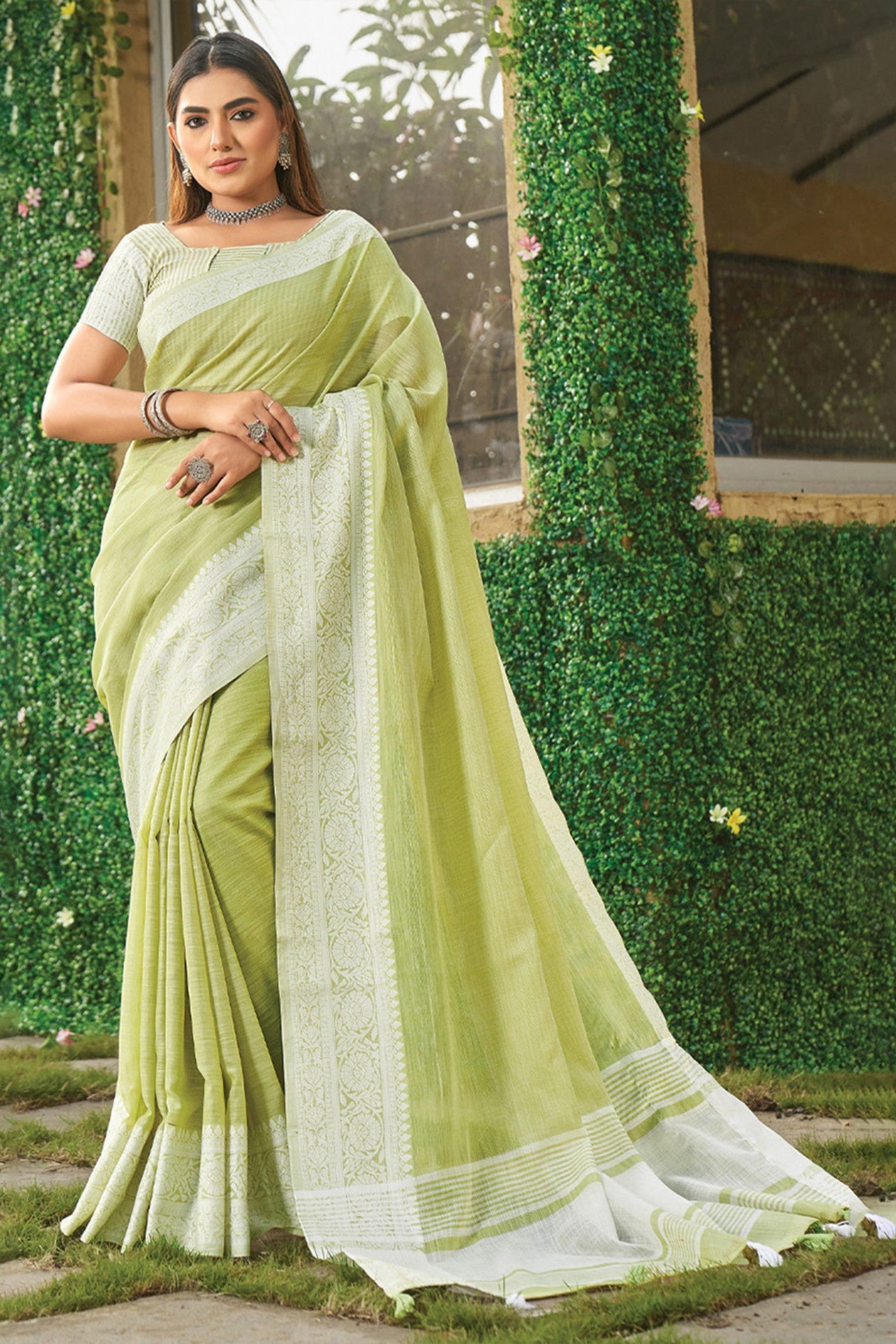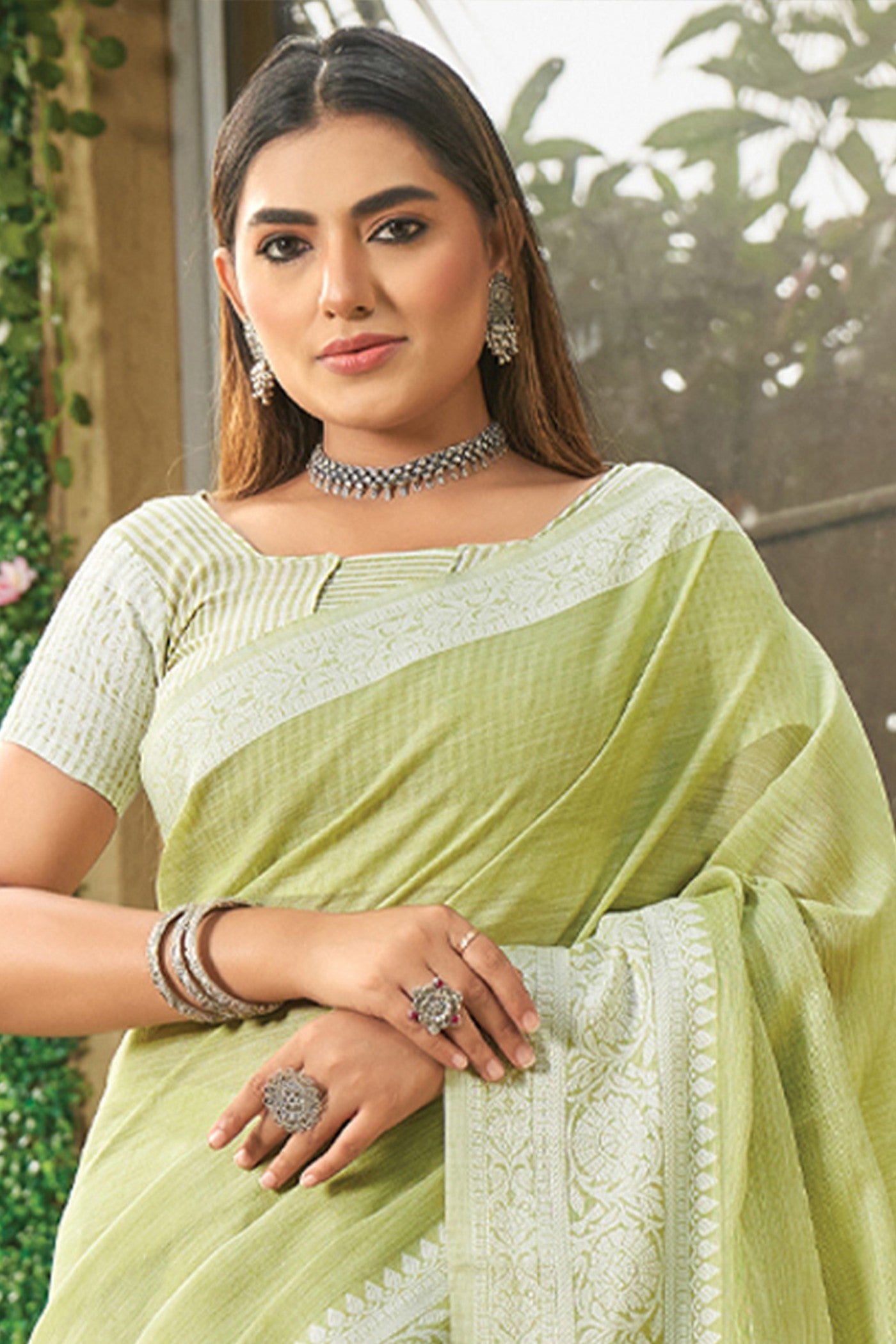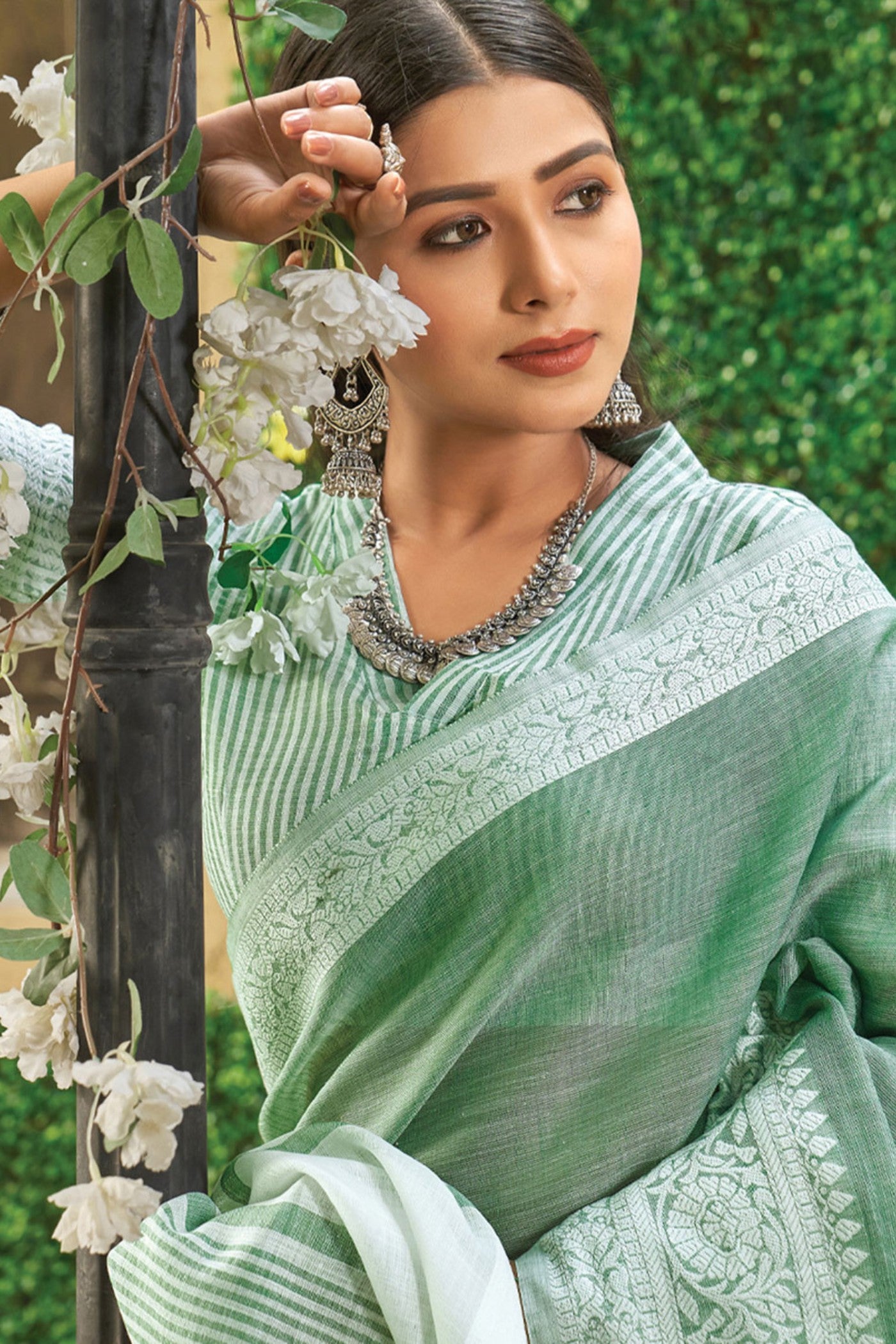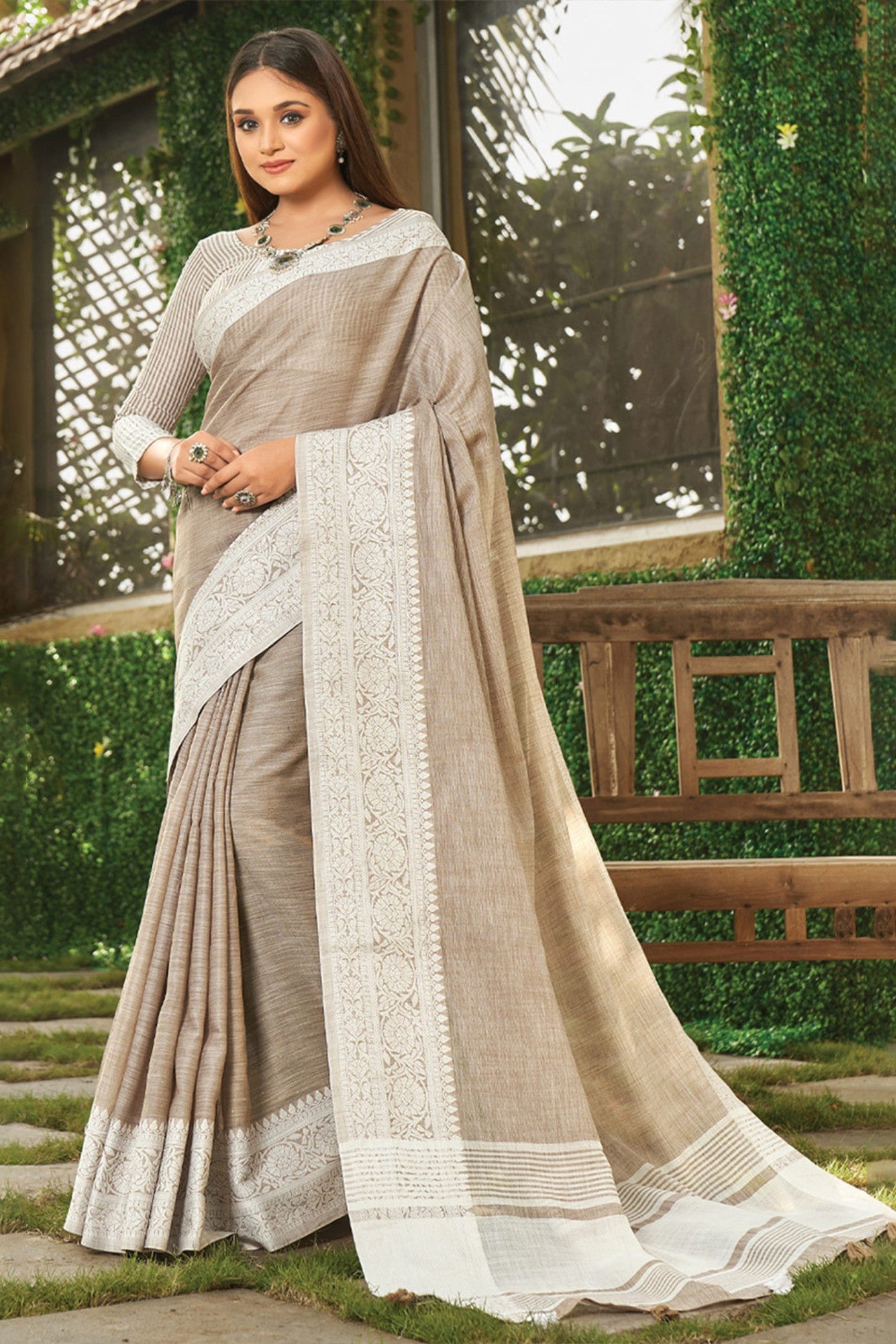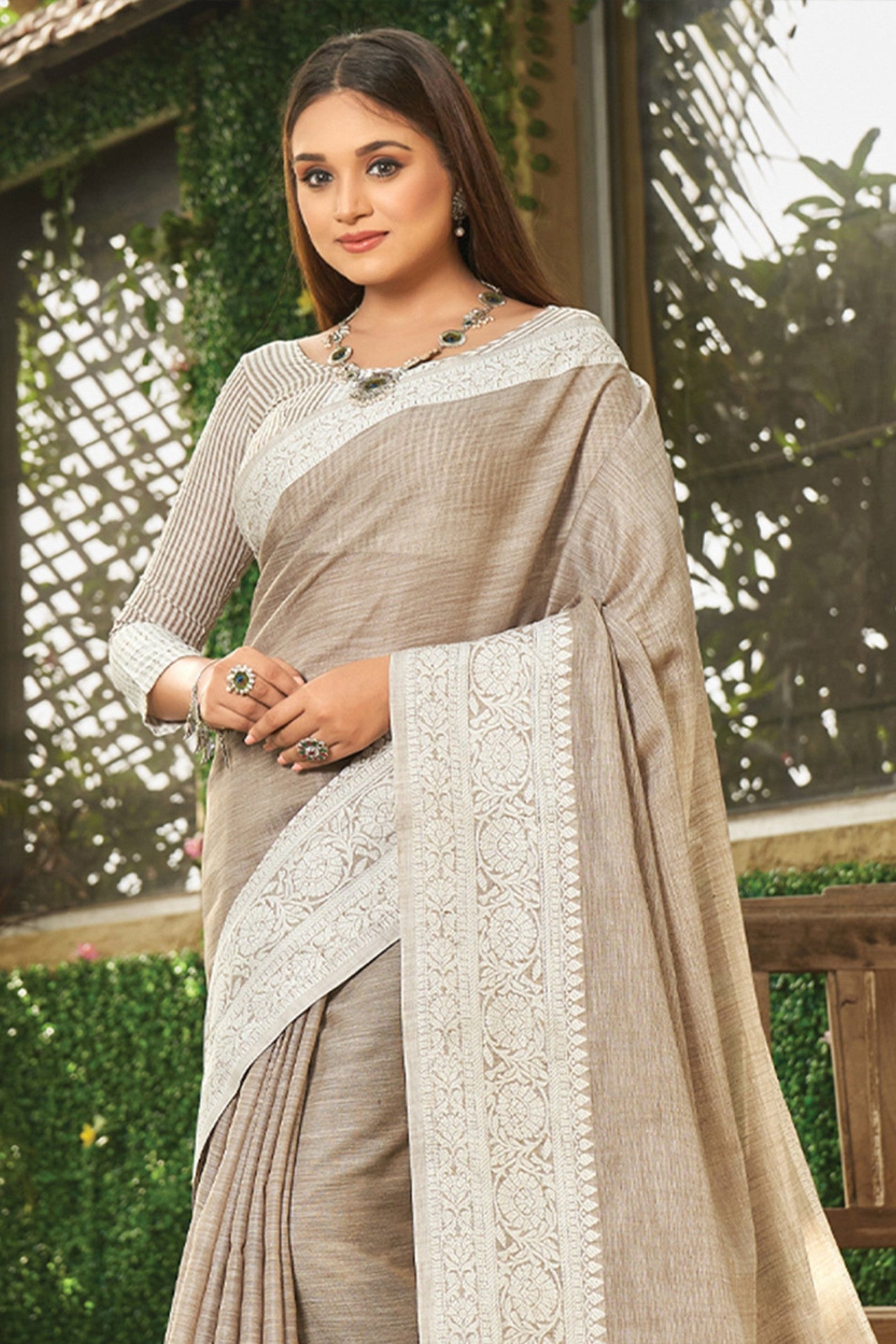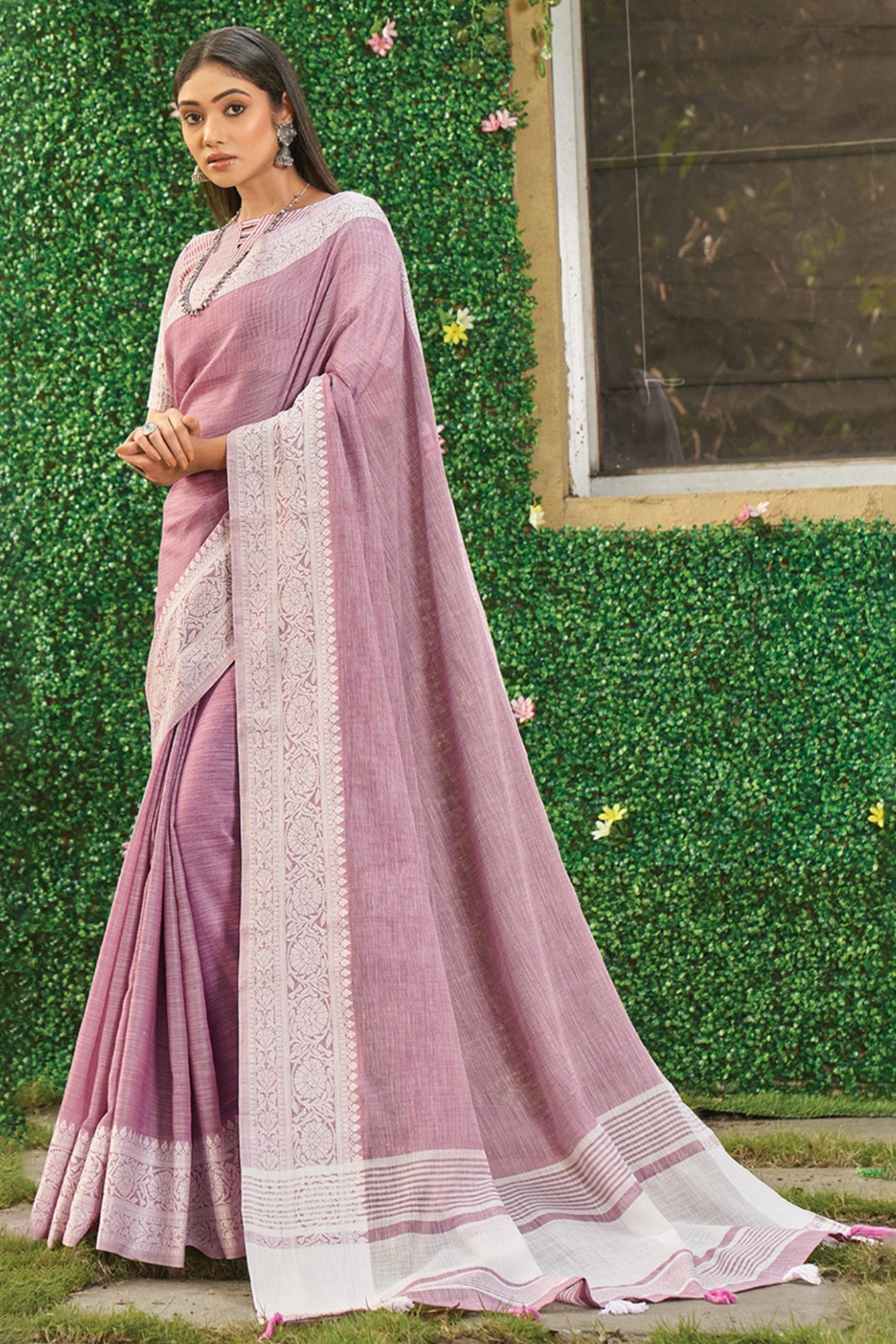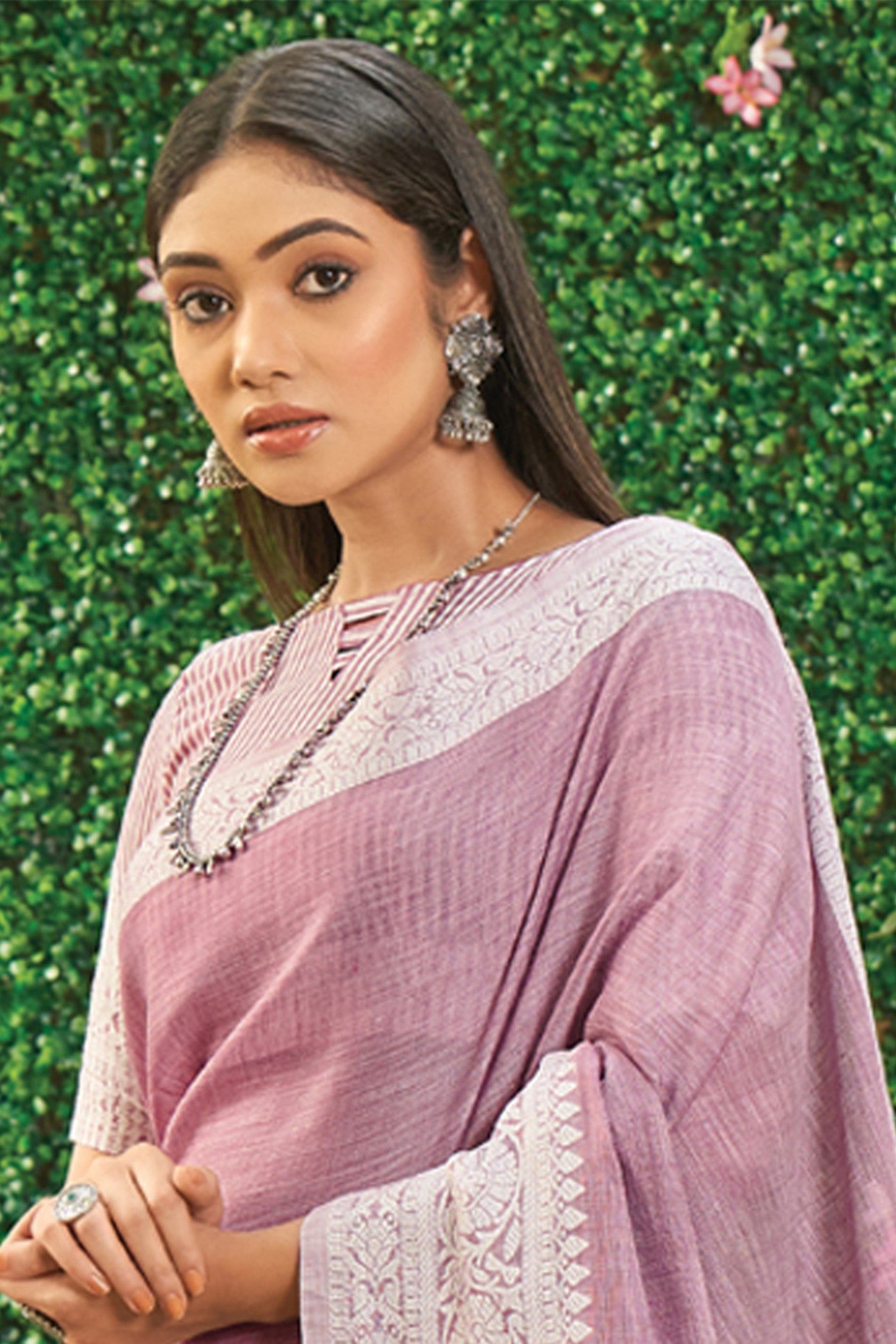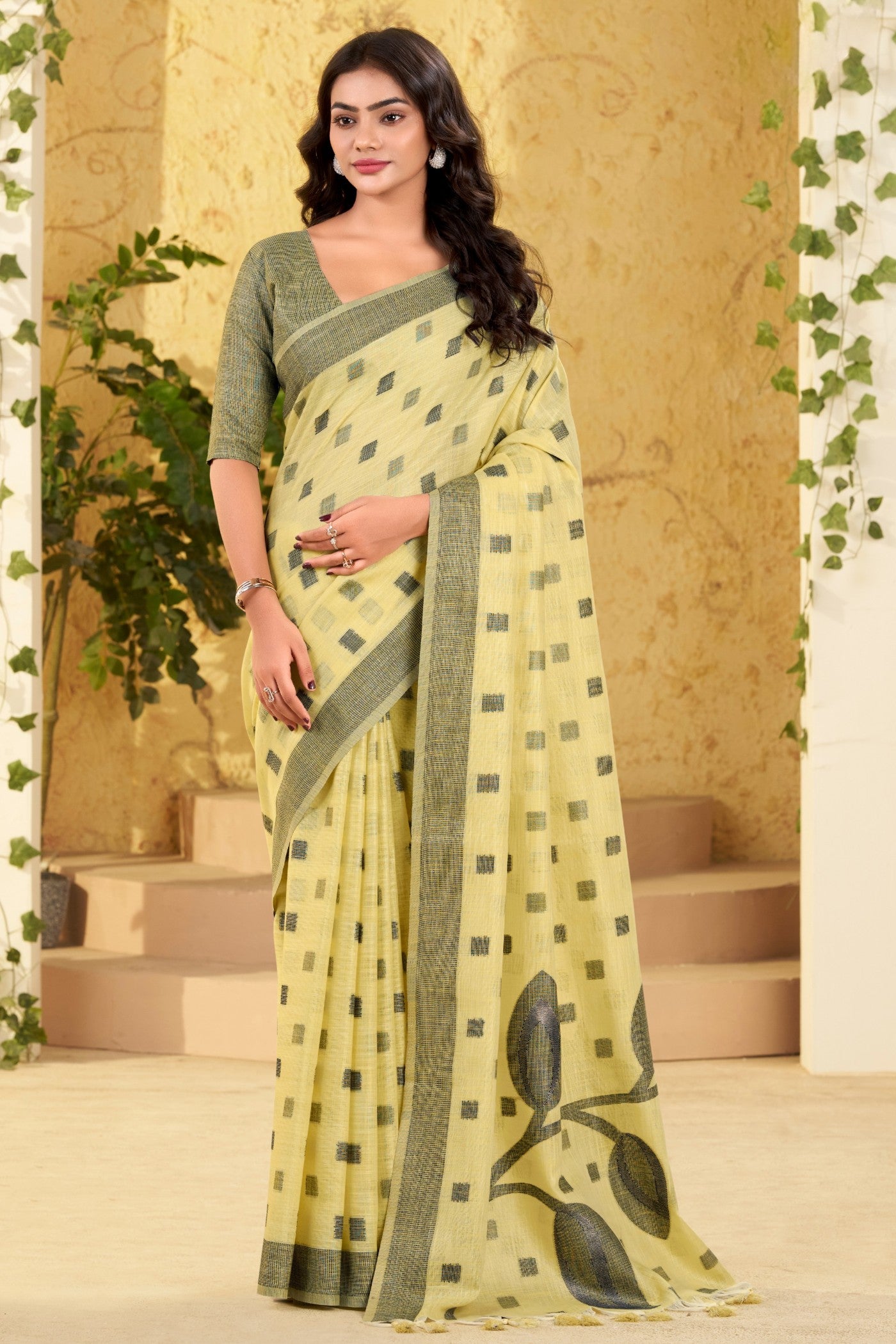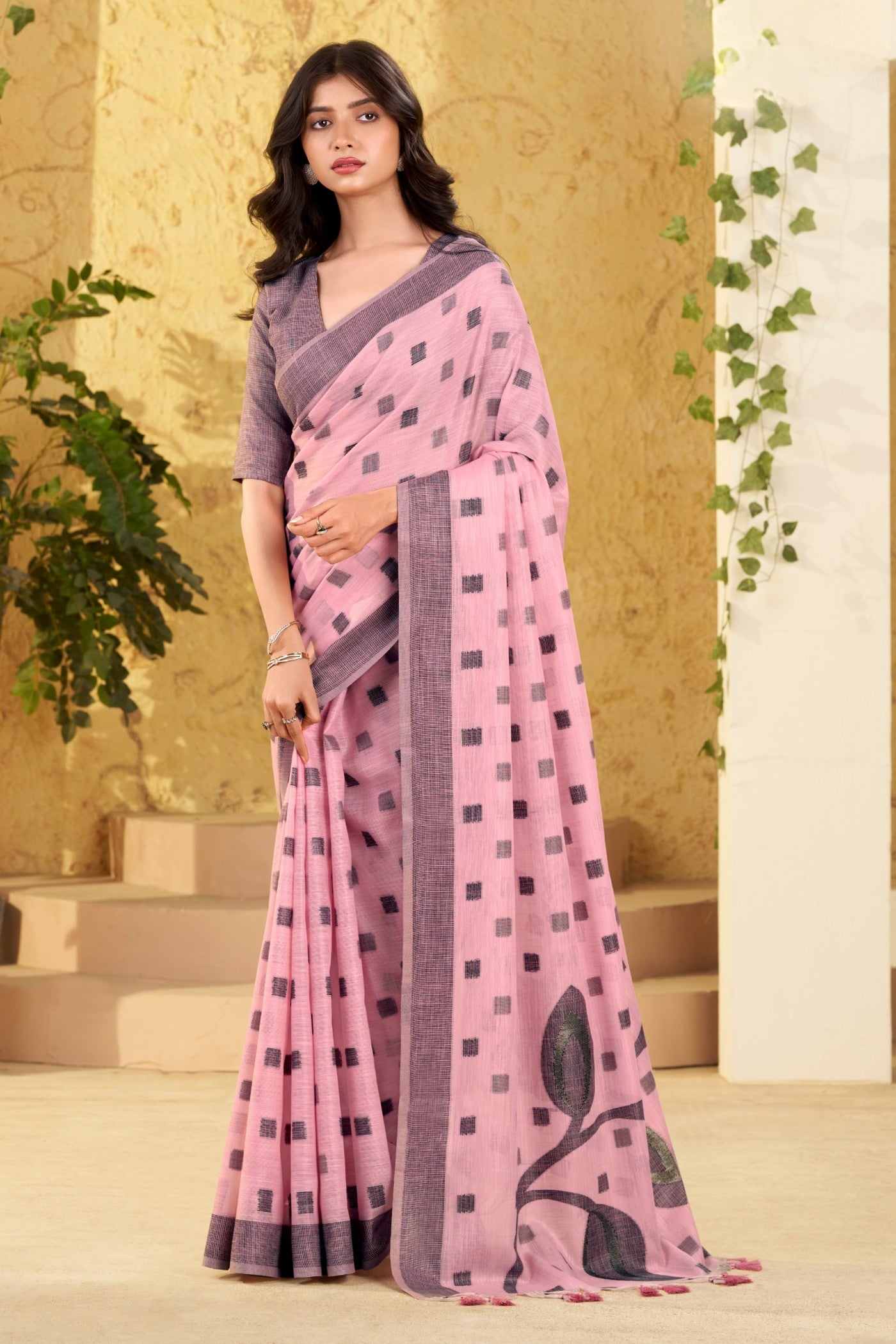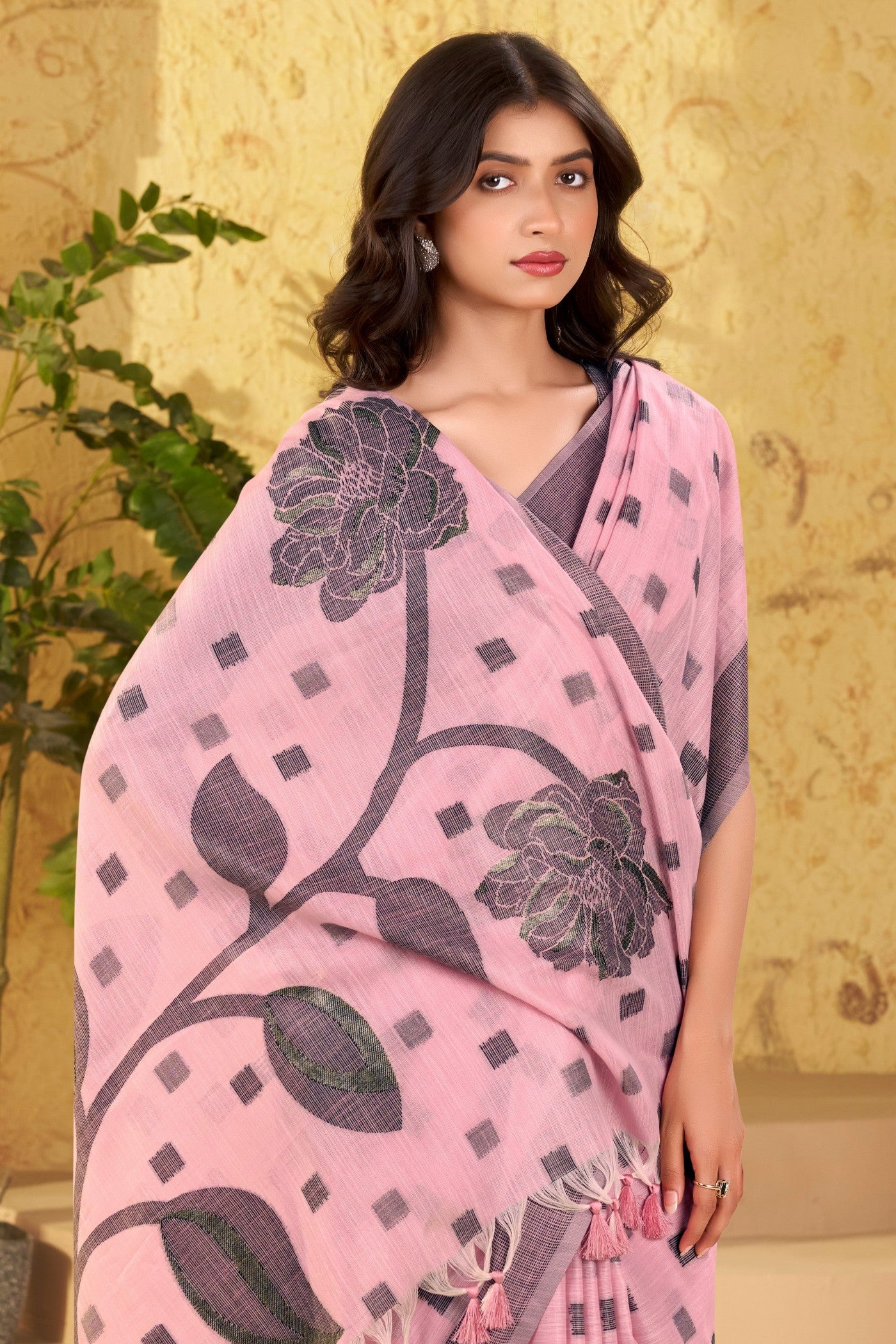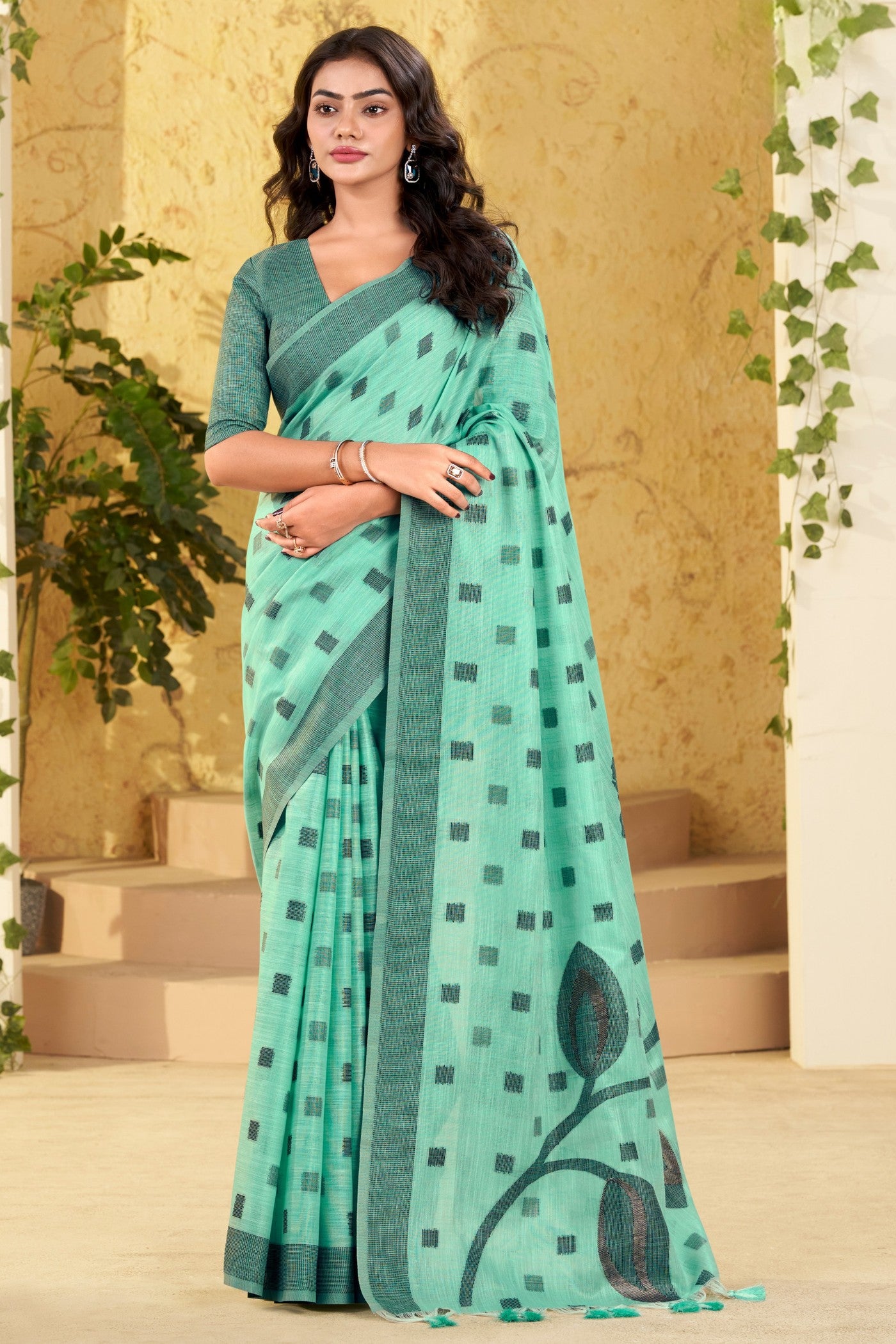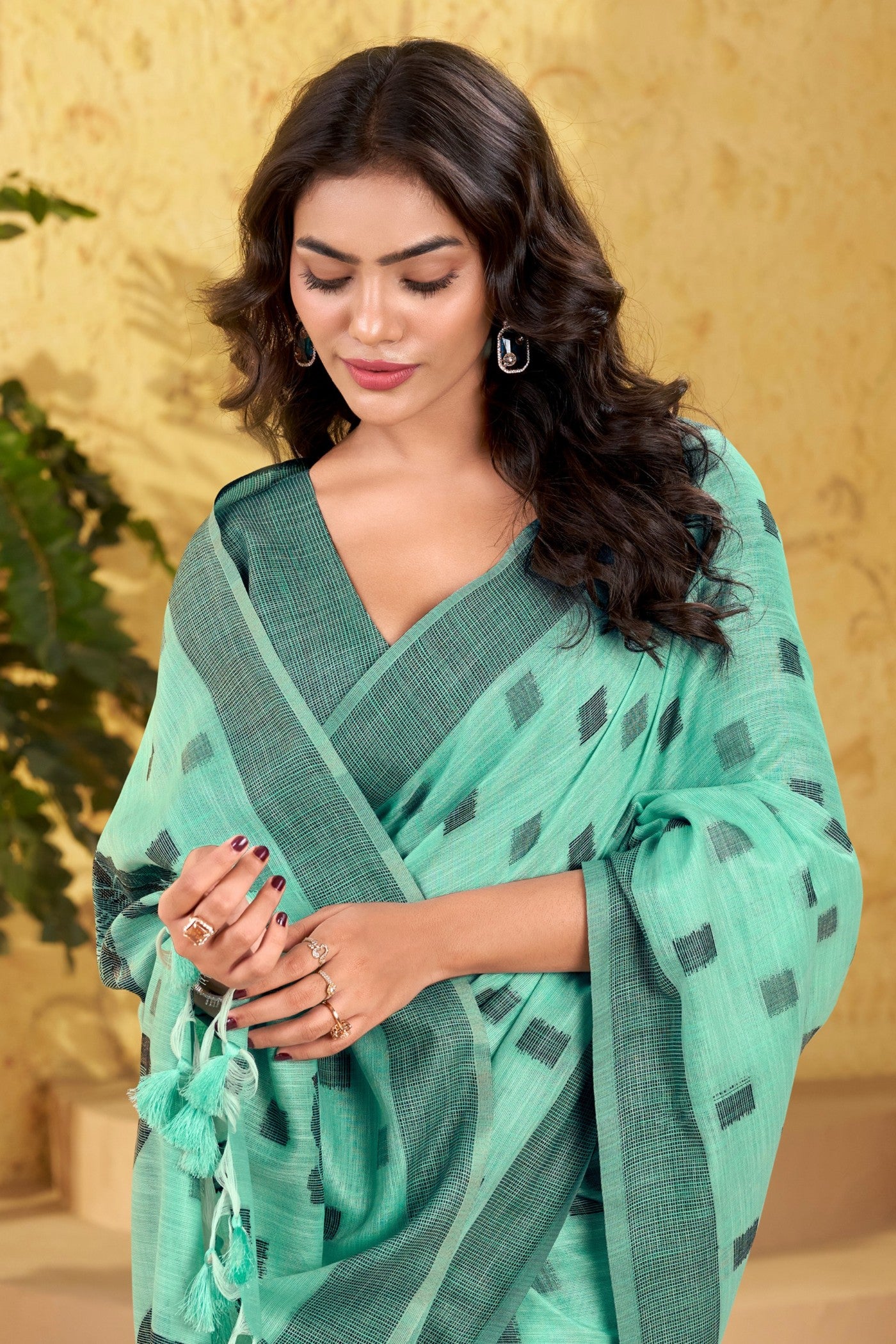Linen Sarees
Sort by
383 products
Navy Blue Floral Linen Silk Saree
Vanta Black Floral Linen Silk Saree
Opal Green Floral Linen Silk Saree
Cybister Blue Floral Linen Silk Saree
Peony Pink Floral Linen Silk Saree
Wine Red Floral Linen Silk Saree
Jonquil Yellow Woven Tissue Linen Saree
Peach Bud Woven Tissue Linen Saree
Rainy Blue Woven Tissue Linen Saree
Pista Green Woven Tissue Linen Saree
Shimmer Pink Woven Tissue Linen Saree
Glitter White and Green Woven Linen Saree
Paper White and Purple Woven Linen Saree
Floral White and Brown Woven Linen Saree
Ghost White and Green Woven Linen Saree
Lotus Pink Woven Linen Saree
Salt White and Blue Woven Linen Saree
Wairrose Green Handloom Linen Saree
Ocado Green Handloom Linen Saree
Hazel Brown Handloom Linen Saree
Classic Purple Handloom Linen Saree
Pastel Yellow Woven Linen Saree
Bush Pink Woven Linen Saree
Summer Green Woven Linen Saree
Linen sarees have gained immense popularity due to their lightweight, breathable fabric and elegant appeal. At MySilkLove, we offer a curated collection of premium linen sarees that blend tradition with contemporary fashion. Whether you’re looking for a casual wear option or a sophisticated saree for a special occasion, shopping online at MySilkLove ensures quality, authenticity, and a seamless experience.
History Of Linen Silk Sarees
Linen, one of the oldest textiles in the world, dates back over 4,000 years. Initially woven in ancient Mesopotamia and Egypt, linen fabric was associated with luxury and purity. Over time, Indian weavers infused linen with silk to create a more refined version of linen silk sarees, which became a favorite among royalty and aristocrats. Today, linen silk sarees continue to be celebrated for their elegance, durability, and comfort.
Types Of Fabric Options in Linen Sarees
-
Pure Linen Sarees
Made entirely from flax fibers, these sarees are crisp, breathable, and perfect for warm weather.
-
Linen Cotton Sarees
A blend of linen and cotton, offering added softness and ease of draping.
-
Linen Silk Sarees
A luxurious mix of linen and silk, adding a subtle sheen and making it ideal for festive occasions.
-
Printed Linen Sarees
Featuring artistic prints, digital patterns, and floral motifs, perfect for casual wear.
-
Embroidered Linen Sarees
Handcrafted with exquisite embroidery, giving a sophisticated and rich look.
Types Of Weaving Techniques In Linen Sarees
-
Plain Weave
The most basic and common weaving technique that gives a smooth finish.
-
Handloom Weaving
Traditionally woven by artisans, offering uniqueness and intricate patterns.
-
Jacquard Weaving
Creates self-designed patterns, often seen in premium linen silk sarees.
-
Block Weaving
A technique where wooden blocks are used to create symmetrical designs.
-
Banarasi Weave
Linen sarees infused with Banarasi weaving techniques for a grand, royal look.
How To Identify Genuine Linen Sarees?
-
Texture Test
Genuine linen has a slightly rough, crisp texture that softens with each wash.
-
Burn Test
A small strand of linen, when burned, smells like paper and leaves a fine ash.
-
Weave Structure
Linen fabric has a distinct cross-weave pattern with visible slubs.
-
Absorbency Test
Linen absorbs moisture quickly, making it ideal for hot climates.
-
Scratch Test
When lightly scratched, authentic linen produces a unique rustling sound.
Why Choose MySilkLove Linen Sarees?
-
Premium Quality
Our sarees are made from authentic linen and undergo stringent quality checks.
-
Handcrafted Designs
Each piece is crafted with precision, ensuring exclusivity.
-
Wide Variety
We offer a diverse range of colors, patterns, and weaves to suit every occasion.
-
Easy Returns & Exchanges
Hassle-free return and exchange policy for customer satisfaction.
-
Affordable Pricing
Competitive pricing for high-quality linen sarees.
FAQ's
1. What makes Linen Saree special?
Linen sarees are known for their breathable nature, durability, and elegant drape, making them a timeless choice.
2. How do I care for my Linen Saree?
It is best to dry clean linen sarees for longevity. If washing at home, use mild detergent and avoid wringing.
3. Is Linen Saree suitable for daily wear?
Yes, pure linen sarees are lightweight and comfortable, making them ideal for everyday wear.
4. Does Linen saree require a fall and pico before wearing?
Yes, adding a fall and pico enhances the saree’s structure and longevity.
5. What are the best blouse designs for Linen Saree?
High-neck, boat-neck, sleeveless, and embroidered blouses complement linen sarees beautifully.
6. Do MySilkLove Linen Sarees come with a blouse piece?
Yes, most of our linen sarees come with a matching or contrast blouse piece.
7. How long does a Linen Saree last with proper care?
With proper care, a linen saree can last for decades, aging gracefully over time.
8. Can I wash my Linen Saree at home?
Hand washing with mild detergent is recommended, but dry cleaning is the best option for longevity.
9. What is MySilkLove’s return and exchange policy for sarees?
We offer a hassle-free 3 days return and exchange policy within a specified timeframe. Check our website for details.
10. How can I verify the authenticity of a MySilkLove Banarasi saree?
Our Banarasi linen sarees come with an authenticity certificate, intricate zari work, and traditional handloom weaving marks.
Linen Sarees Price List
Explore our other collections
Sarees by weave type
Ajrakh Sarees | Banarasi Bandhani Saree | Banarasi Chiffon Saree | Banarasi Georgette Saree | Banarasi Katan Silk Saree | Banarasi Patola Saree | Banarasi Sarees | Banarasi Tissue Saree | Banarasi Tussar Silk Saree | Bandhani Sarees | Bhagalpuri Saree | Brasso Saree | Chanderi Sarees | Chiffon sarees | Chikankari Sarees | Cotton Sarees | Cotton Silk Saree | Crepe Fabric Saree | Designer Saree | Dola Silk Saree | Embroidery Sarees | Floral Saree | Floral Saree | Georgette Saree | Gujarati Saree | Hand Block Printed Sarees | Handloom Cotton Saree | Handloom Sarees | Ikat Sarees | Indo Western Saree | Ivory Banarasi Saree | Jamdani Sarees | Kalamkari Sarees | Kanjivaram Sarees | Kashmiri Sarees | Khaddi Georgette Saree | Khadi Saree | Kota Sarees | Latest Saree Designs | Lehariya Saree | Madhubani Sarees | Maharashtrian Saree | Maheshwari Sarees | Mul Mul Cotton Saree | Net Saree | Office Wear Saree | Organza Sarees | Paithani Sarees | Pashmina Sarees | Patola Sarees | Pattu Saree | Printed Sarees | Raw Silk Sarees | Ready To Wear Sarees | Satin Sarees | Sequin Sarees | Shimmer Saree | Silk Sarees | South Silk Sarees | Tissue Sarees | Tussar Sarees
Sarees by color
Beige Saree | Black Banarasi Saree | Black Net Saree | Black Sarees | Black Sequin Saree | Blue Banarasi Saree | Blue Sarees | Brown Banarasi Saree | Brown Sarees | Cream Saree | Cream Sarees | Golden Sarees | Green Banarasi Saree | Green Sarees | Grey Sarees | Lavender Saree | Maroon Sarees | Multicolor sarees | Navy Blue Sarees | Off White Saree | Orange Banarasi Saree | Orange Bandhani Saree | Orange Sarees | Peach Colour Sarees | Pink Banarasi Saree | Pink Sarees | Purple Banarasi Saree | Purple Sarees | Red Banarasi Saree | Red Sarees | Silver Colour Sarees | White Banarasi Saree | White Bridal Saree | White Sarees | Yellow Banarasi Saree | Yellow Sarees
Sarees by occasion
Bride | Cocktail | Engagement | Haldi | Mehendi | Onam Saree | Party Wear Sarees | Reception Sarees | Sangeet | Sarees for Farewell | Summer Sarees | Wedding Edit
Dresses and lehengas
Dresses | Dresses and Salwar suits | Lehenga | Salwar Suit & Dresses
Sarees by price range
Sarees above Rs.10000 | Sarees between Rs.2000 to Rs.3000 | Sarees from Rs.3000 to Rs.5000 | Sarees From Rs.5000 to Rs.7500 | Sarees from Rs.7500 to Rs.10000 | Sarees under 2000
Other
All Sarees | All Sarees | Best Seller Sarees | Best Seller Sarees | Blue sarees | Brown Sarees | Green Sarees | Grey sarees | Inventory exact 0 | Inventory less than zero | modal sarees | Pink Sarees | Printed Sarees | Printed Sarees | Printed Sarees | Printed Sarees | red sarees | satin saree | satin sarees | Yellow Sarees | 🔥 Hot Picks, Cool Prices – Up to 80% OFF!
Linen Sarees Reviews
MySilkLove Assured
Buy with confidence
Direct from Manufacturers
No middlemen involved
Satisfied or refunded
Amount is refunded if you don't like the product.
Good quality fabric
Perfect finish, stain free products
Sustainable
Ethical manufacturing, fair wages for labours.


